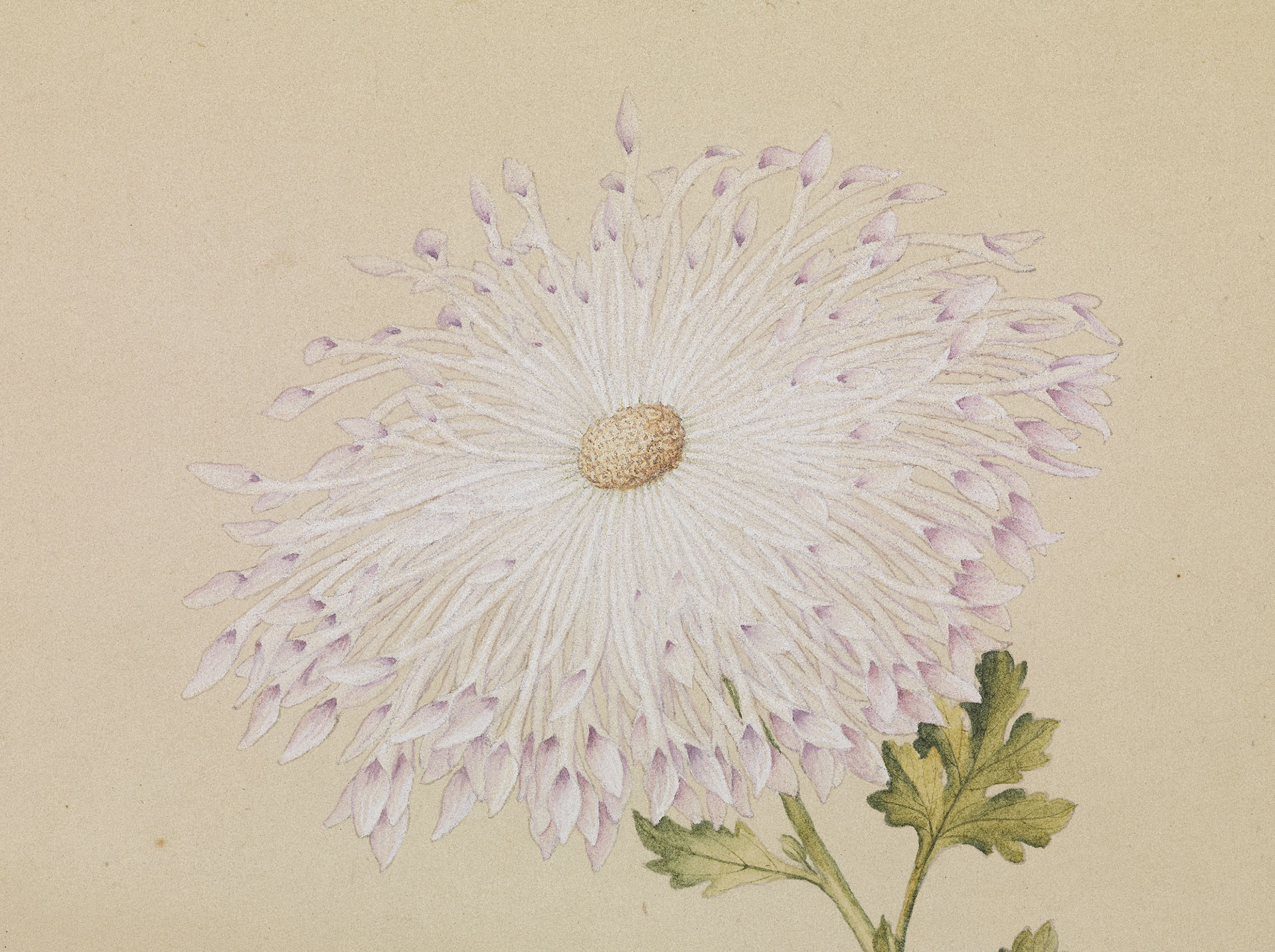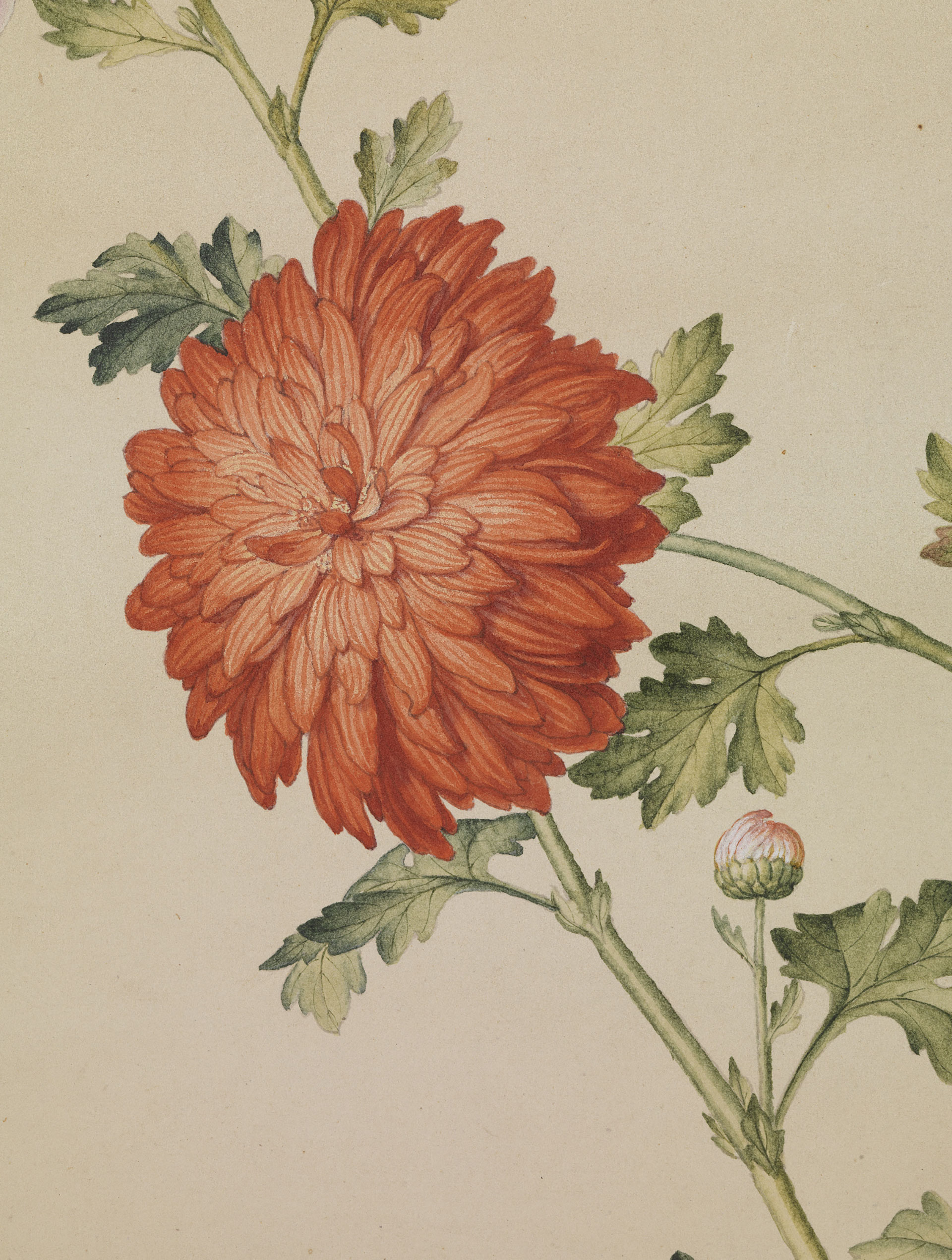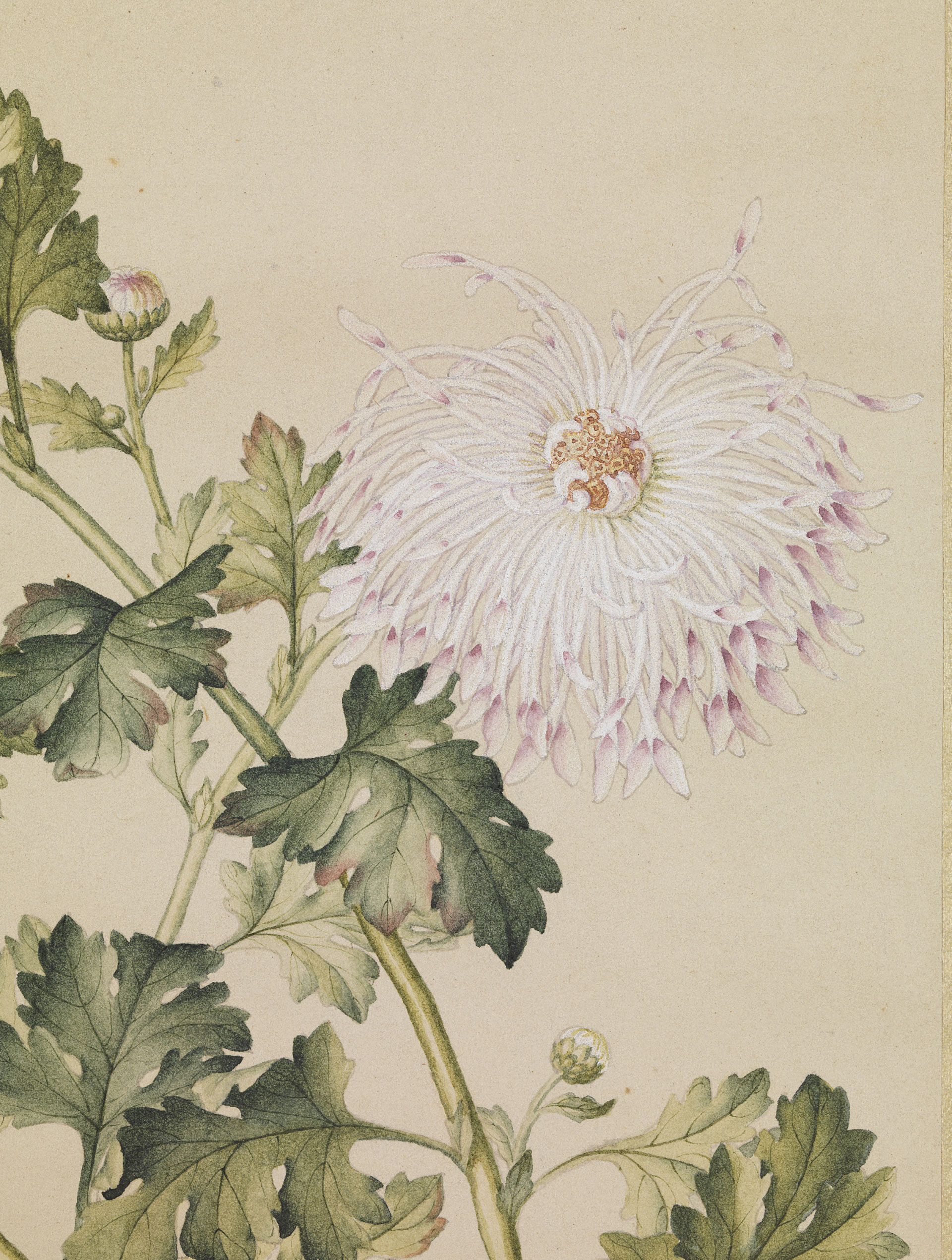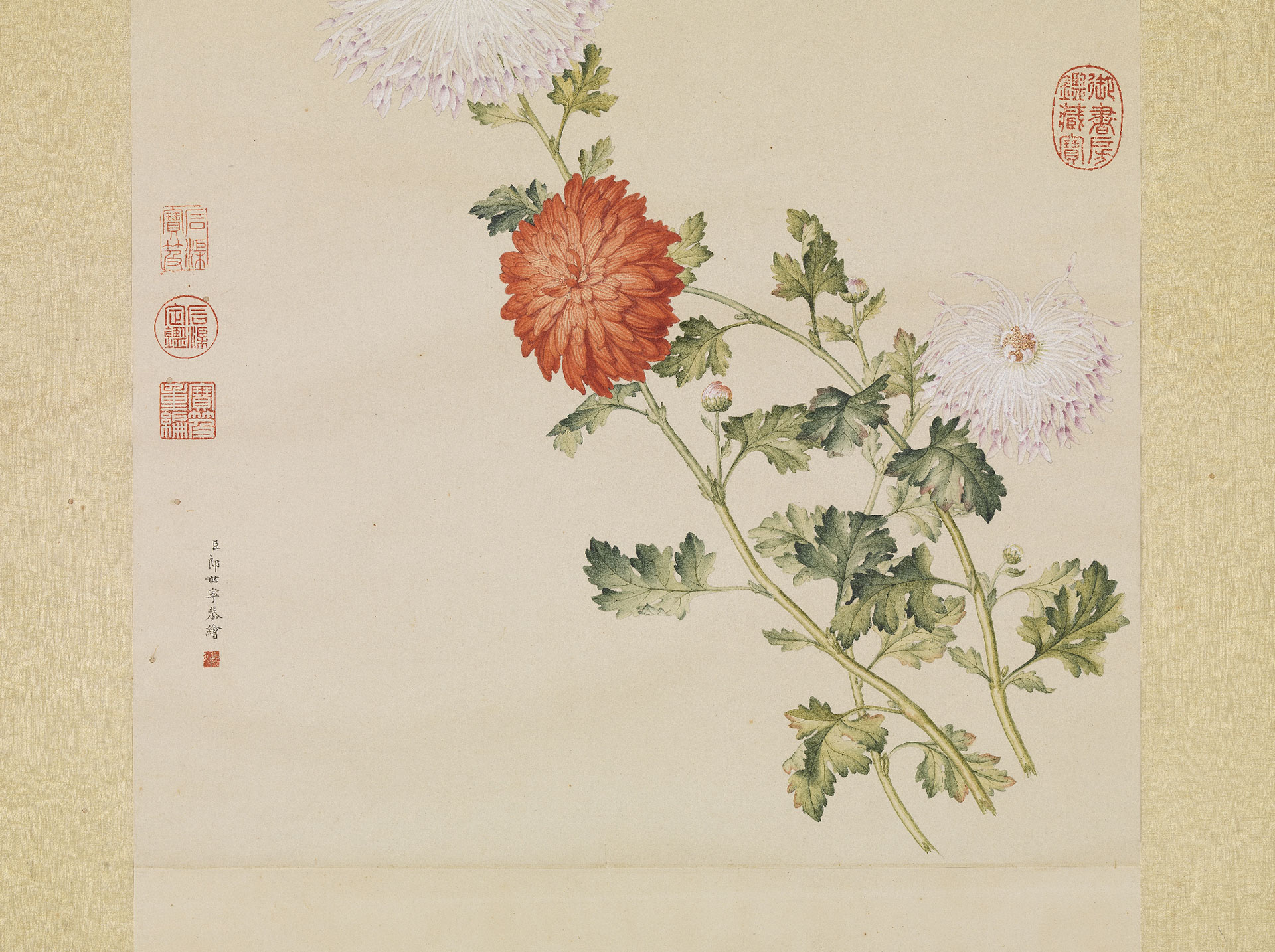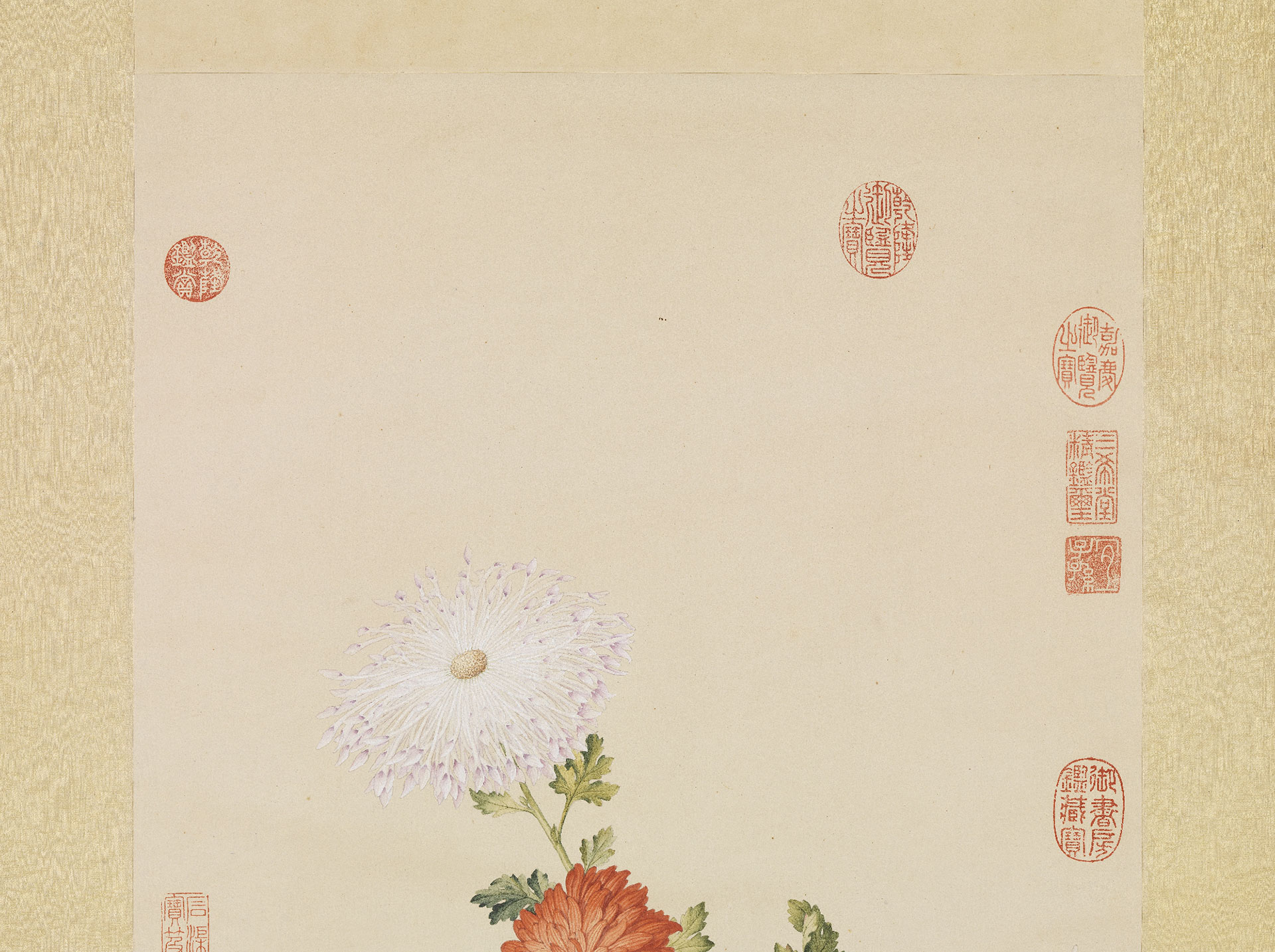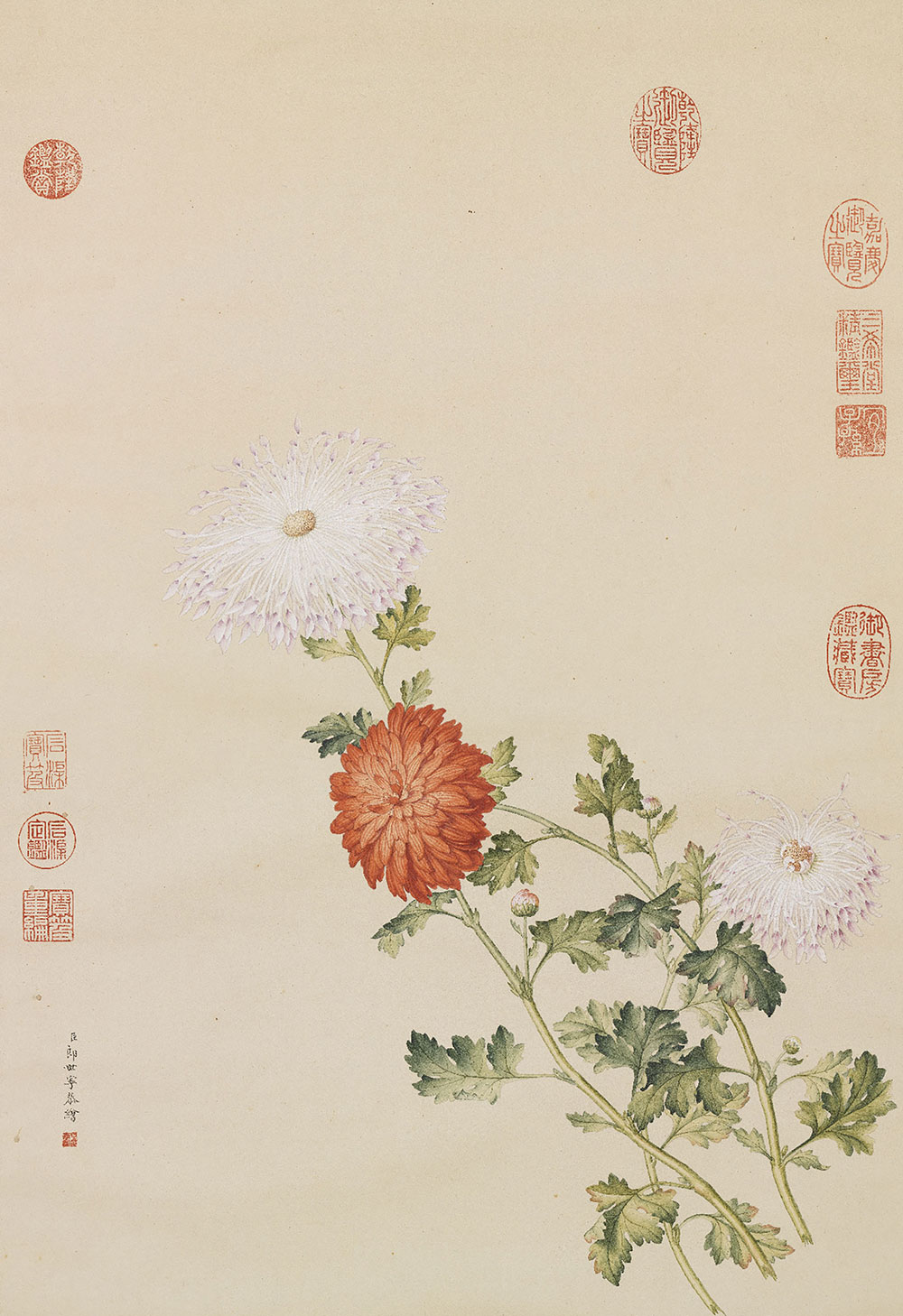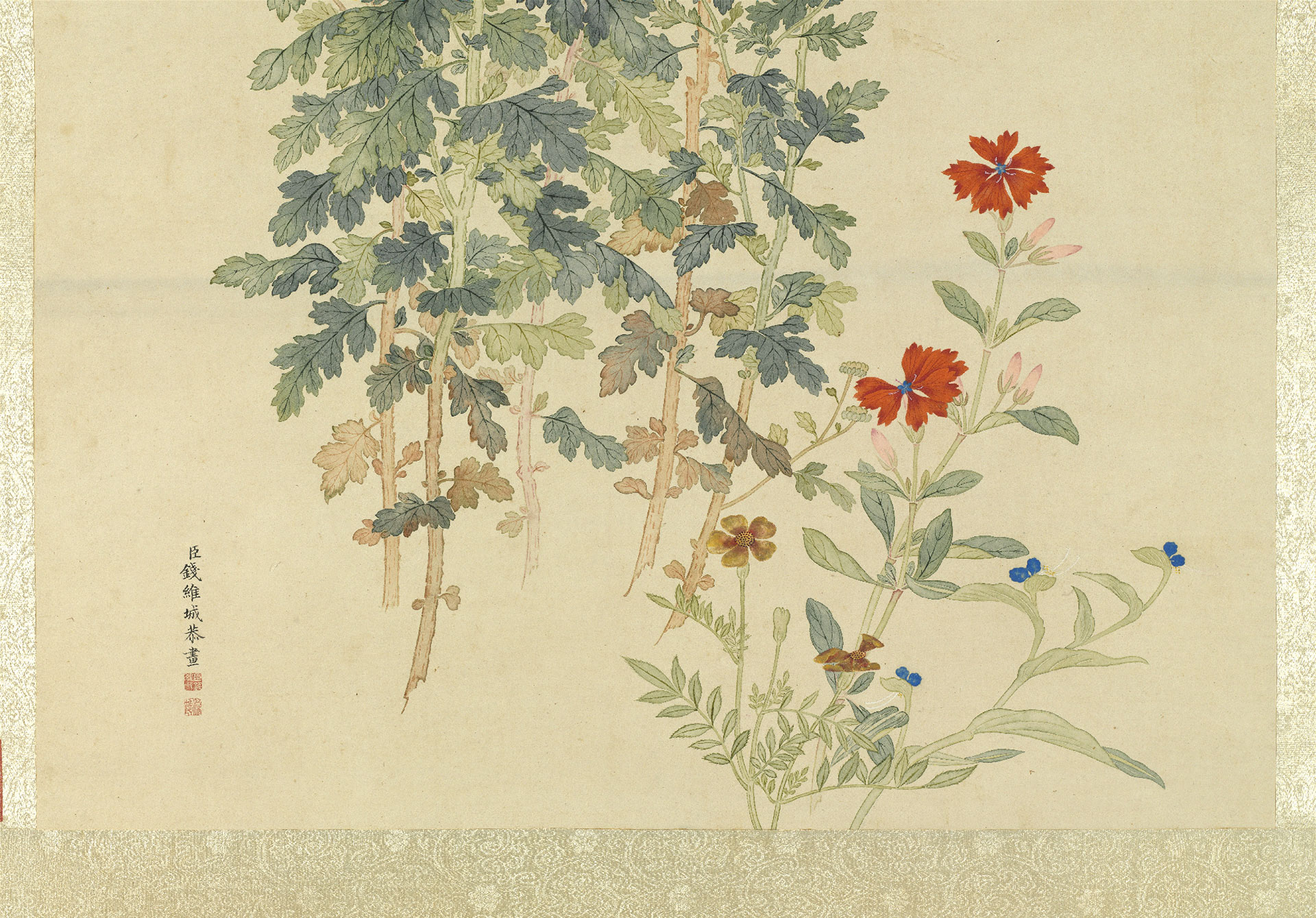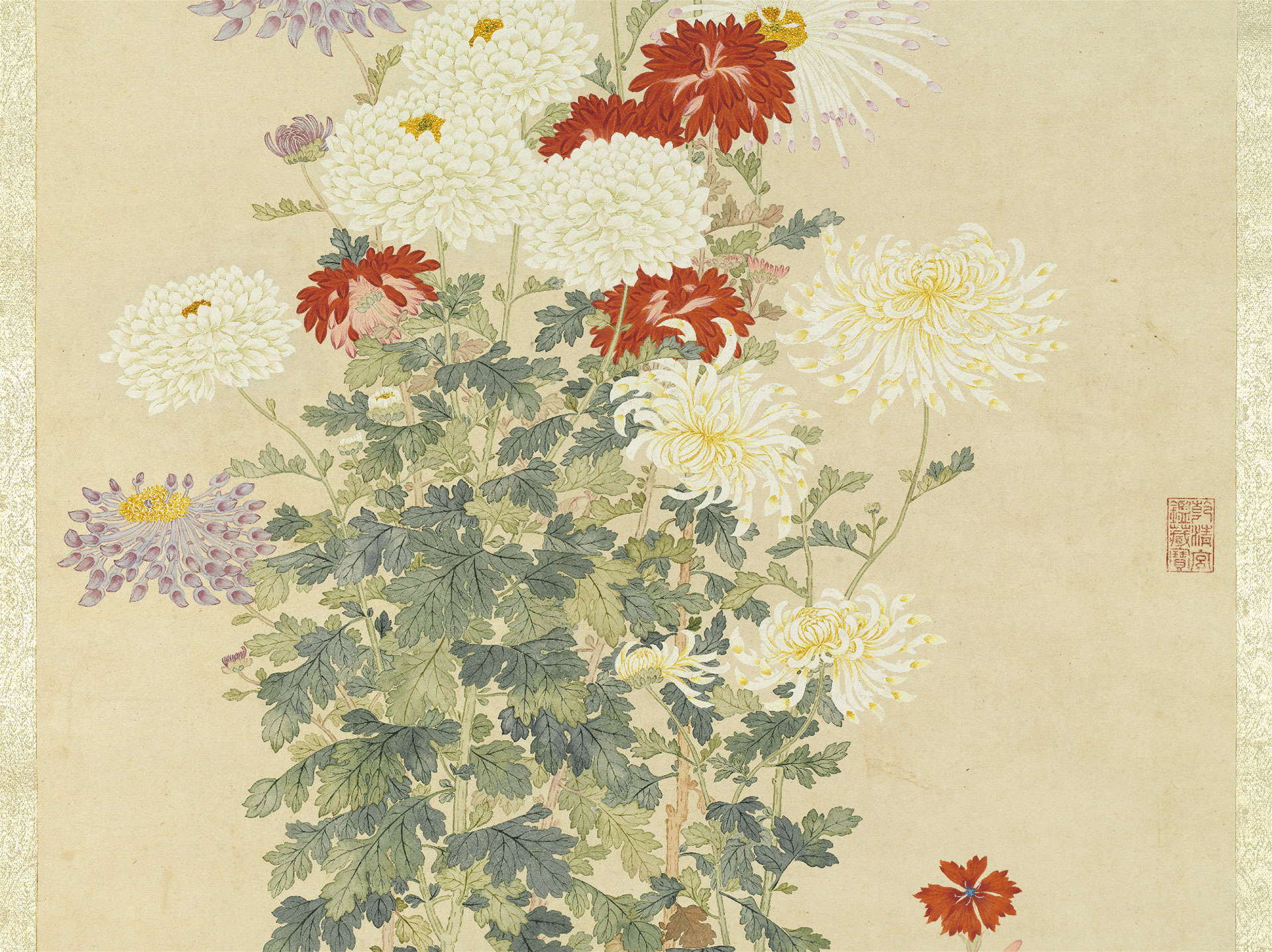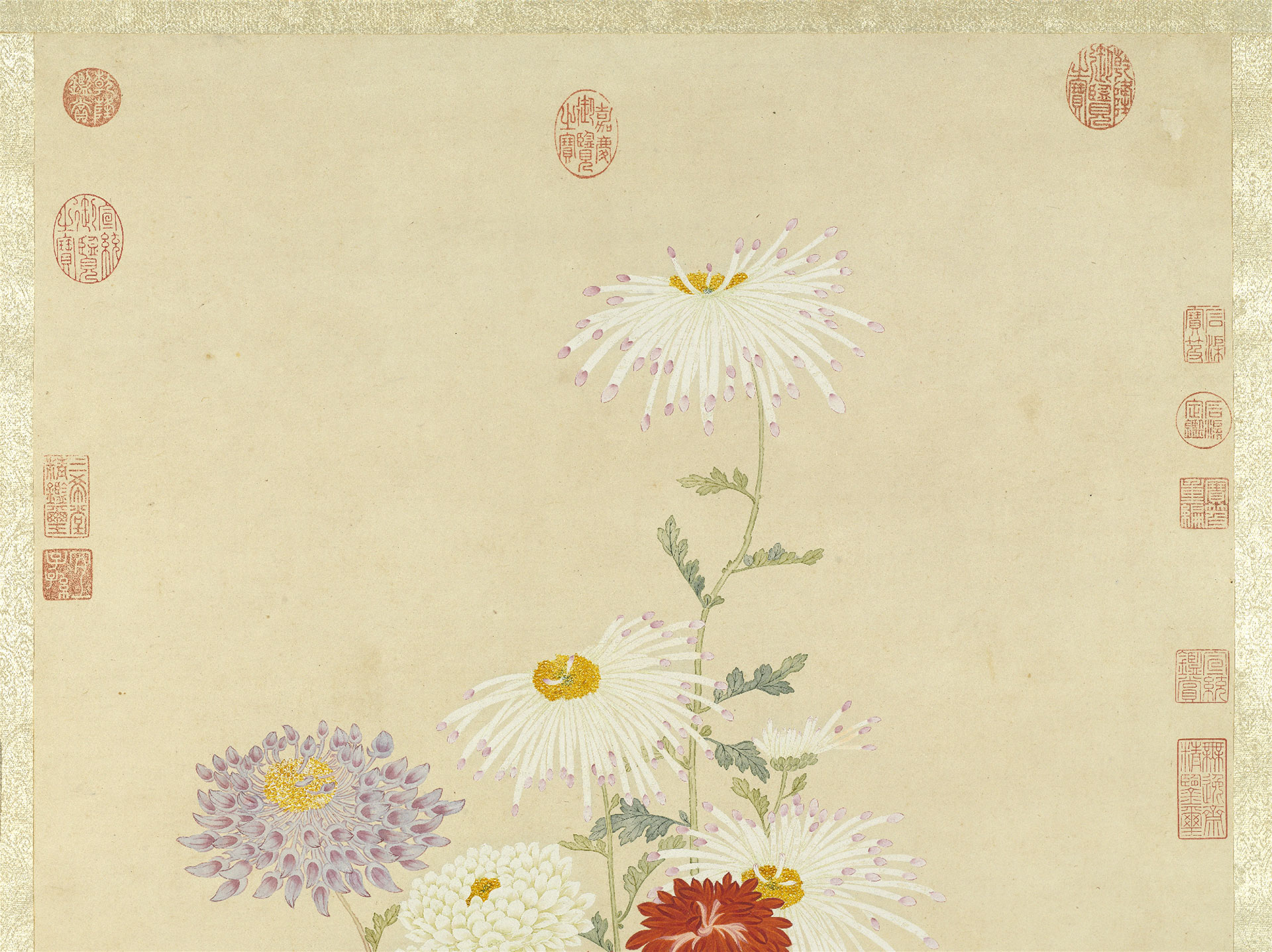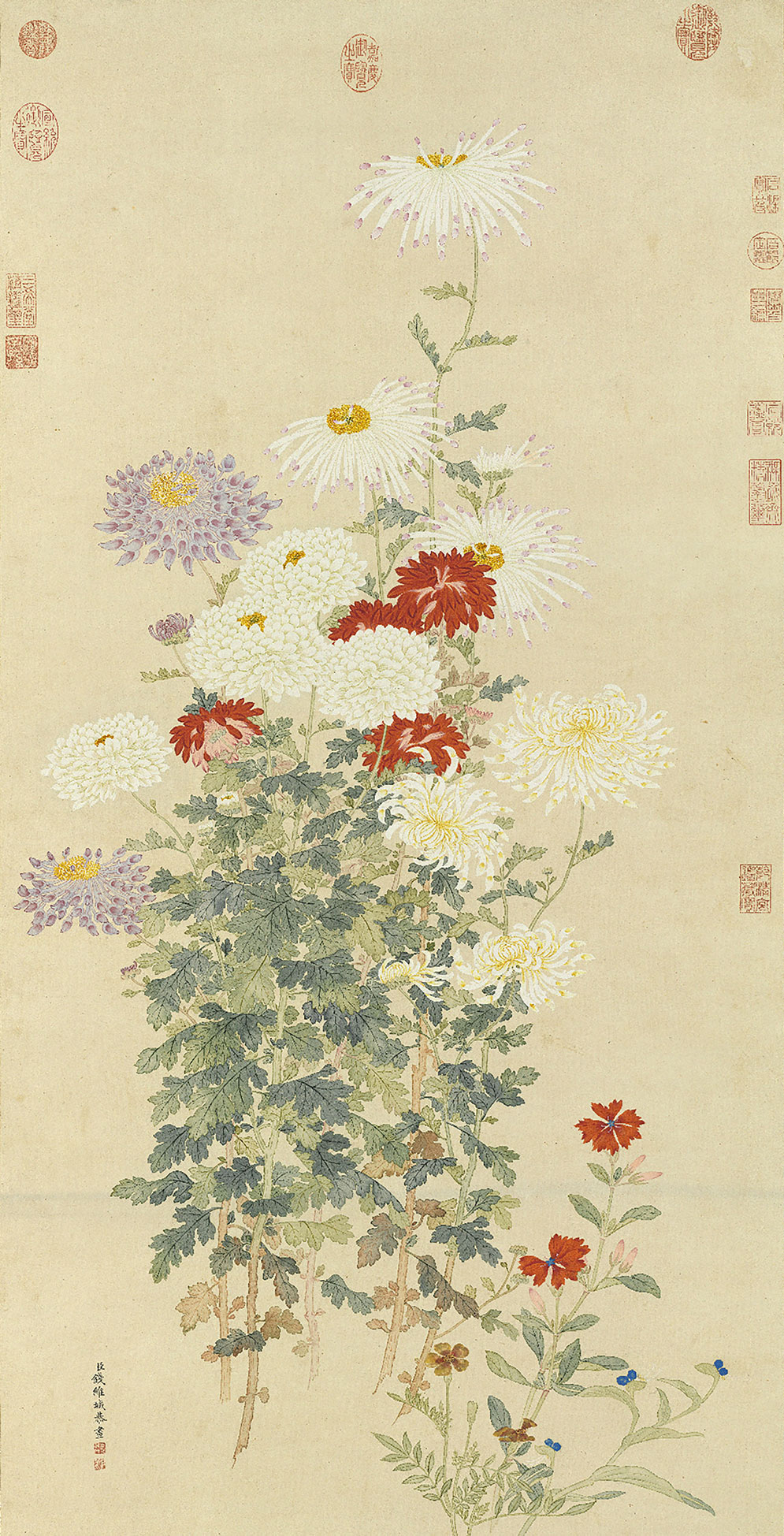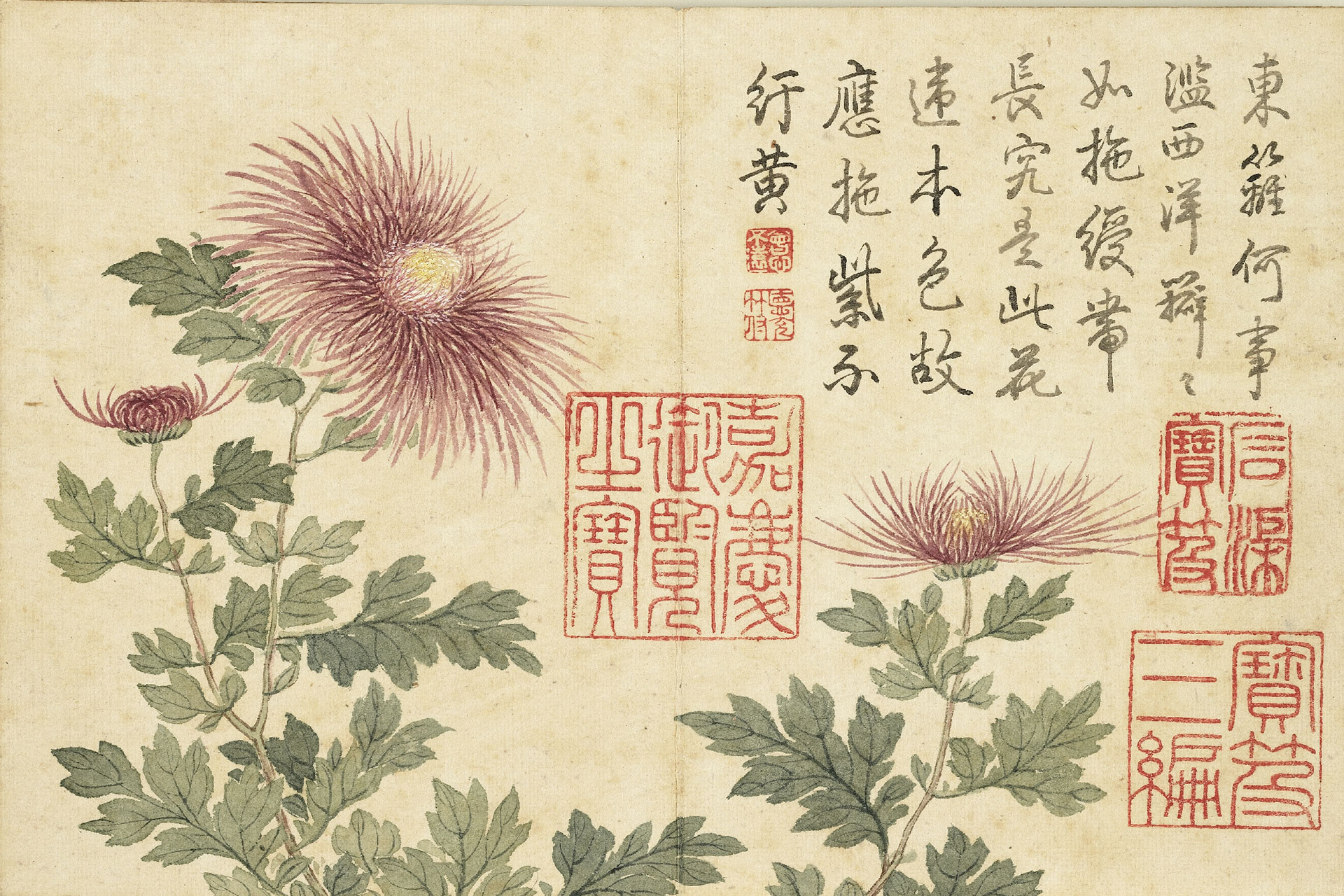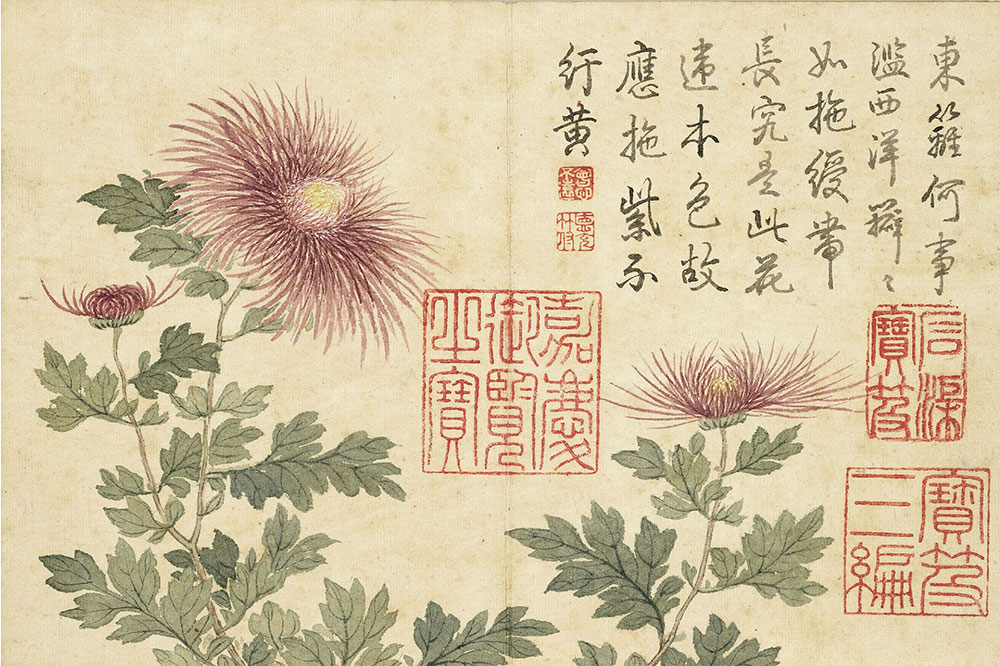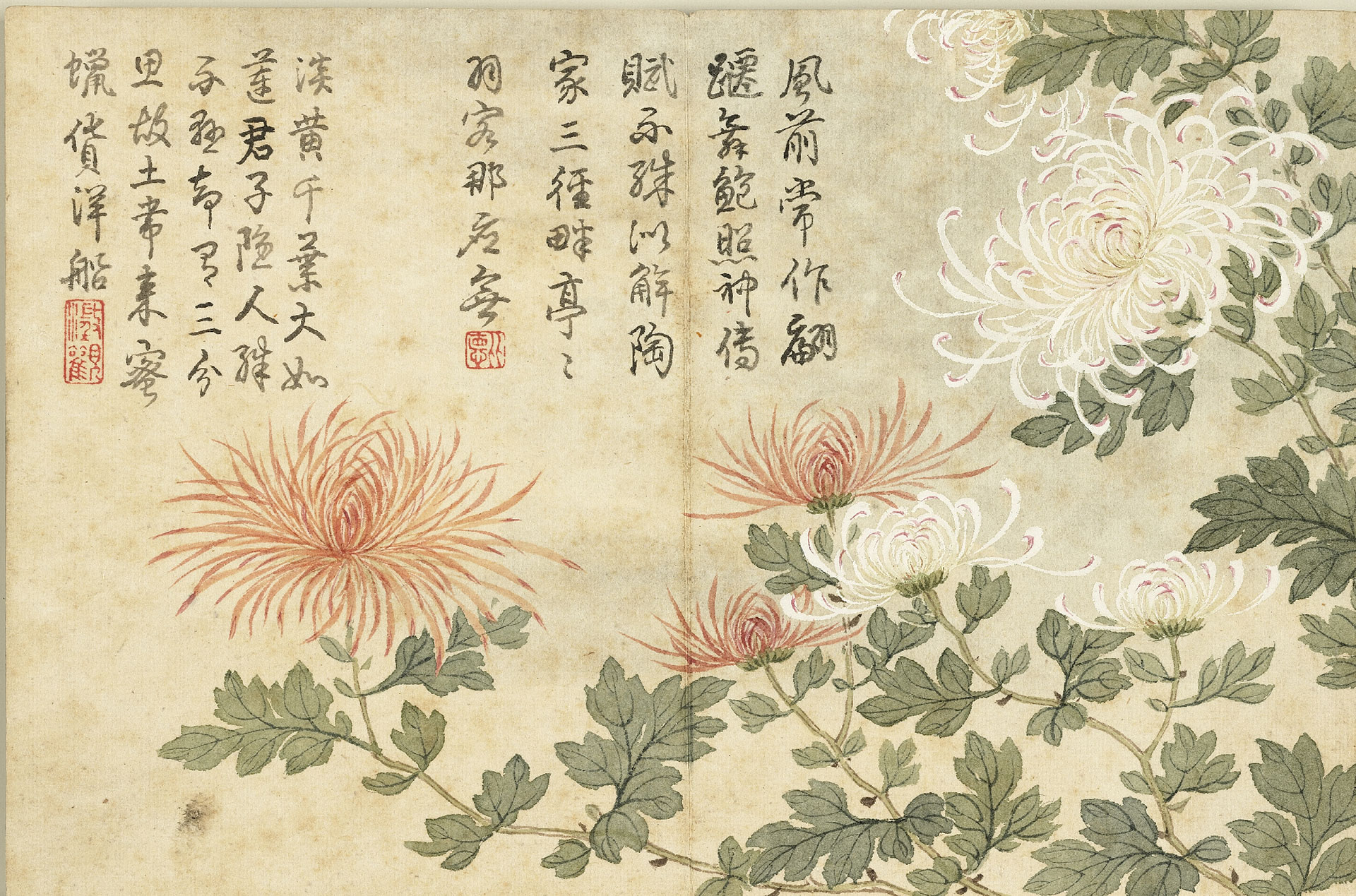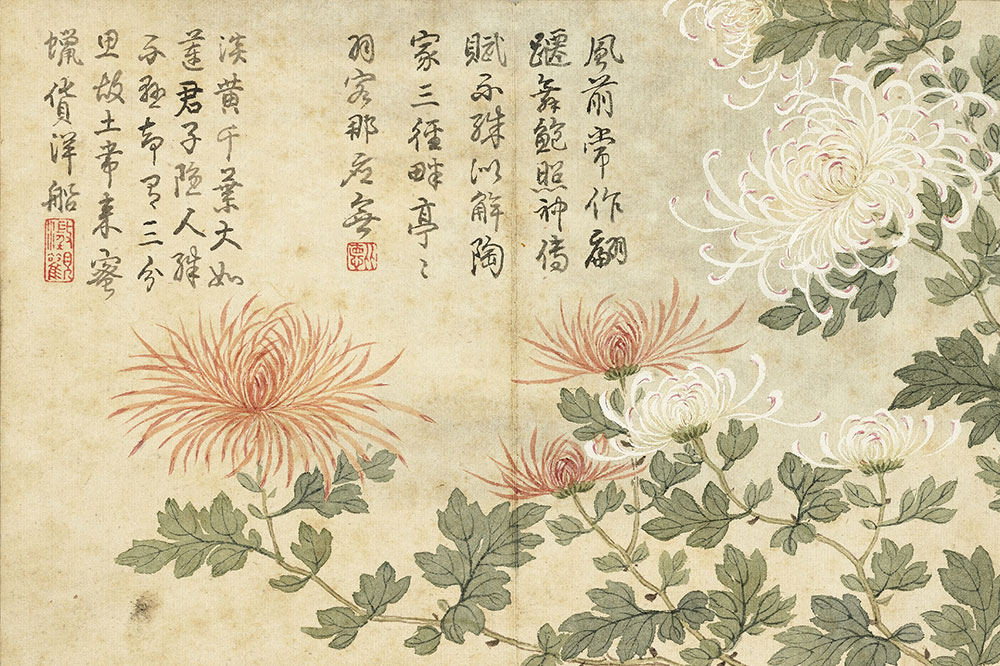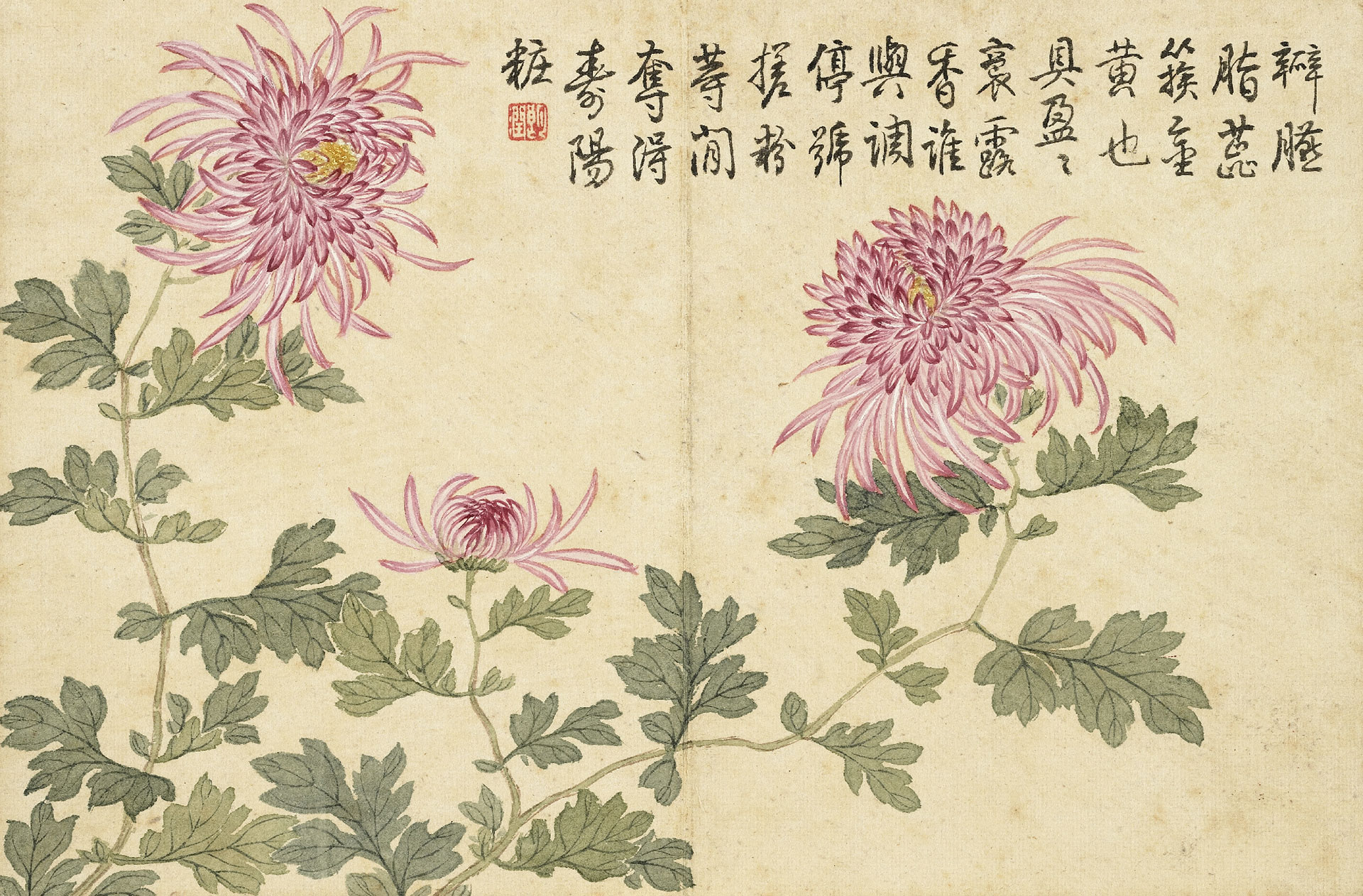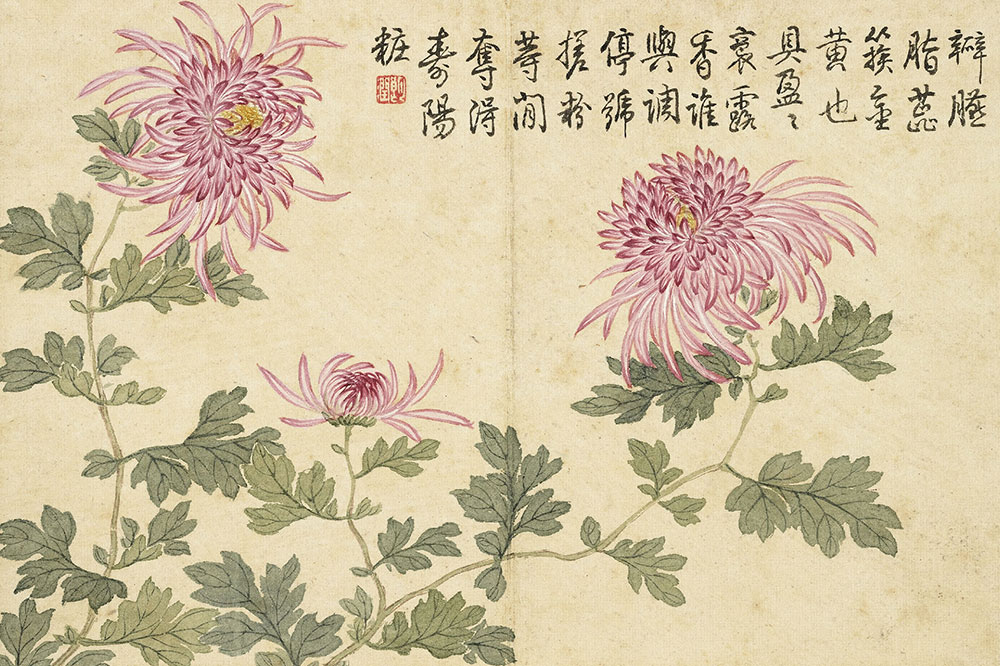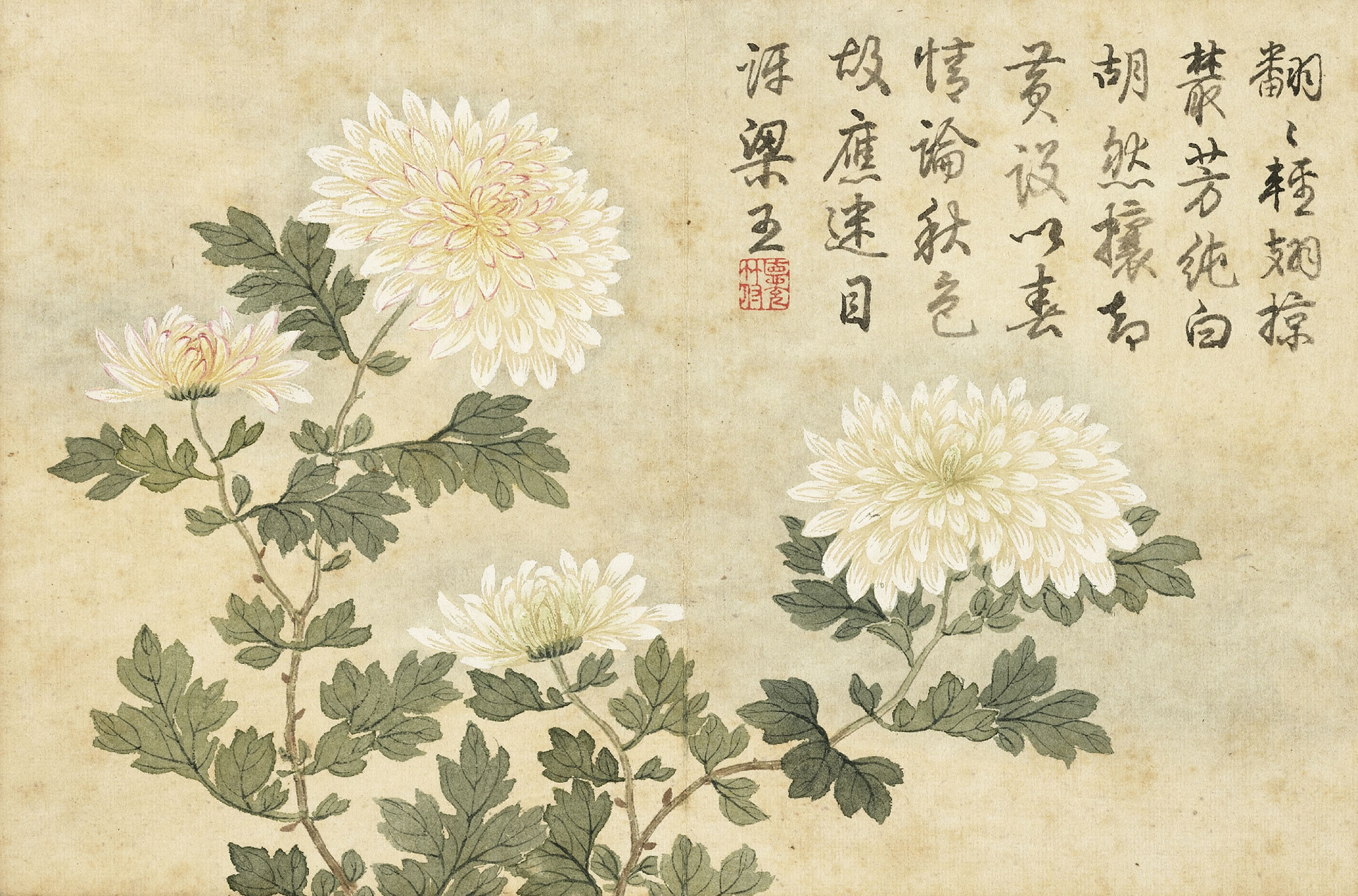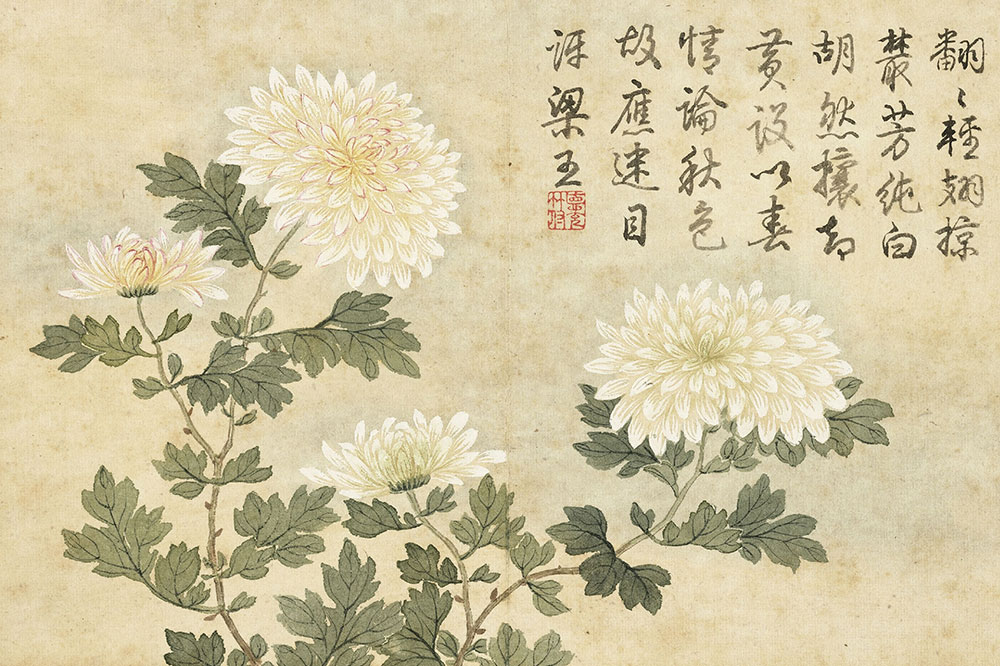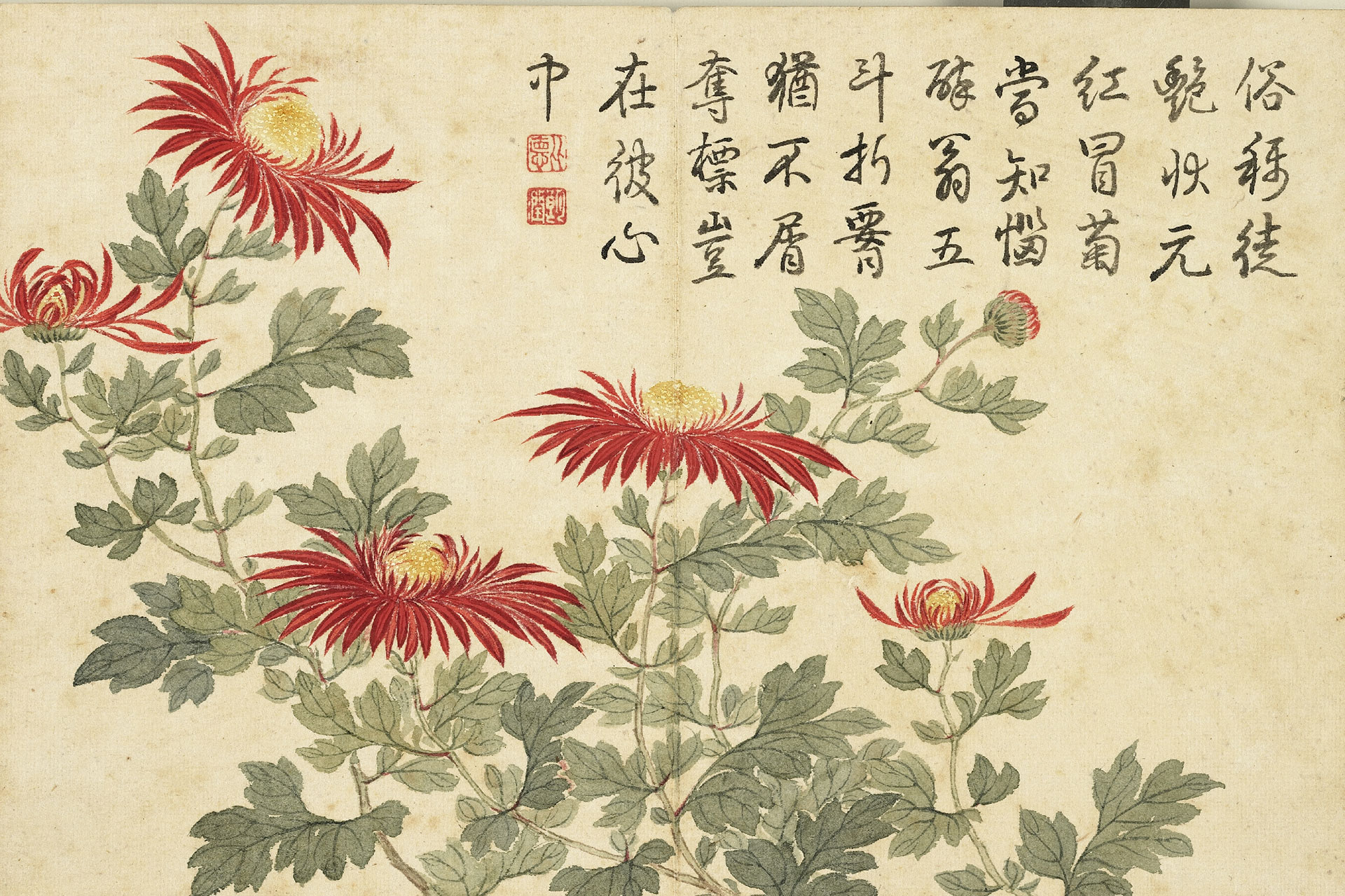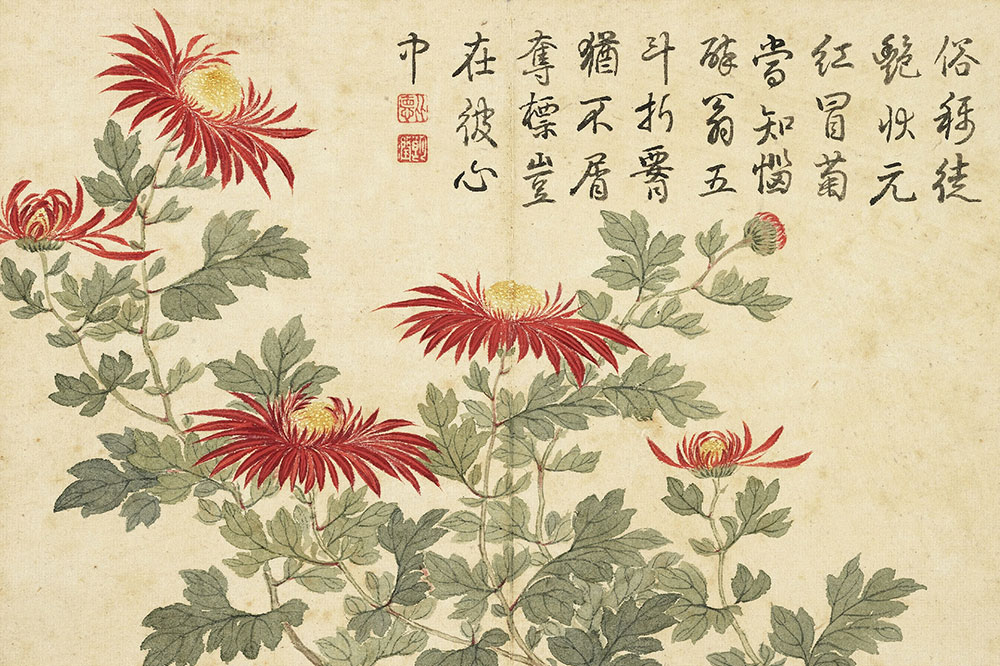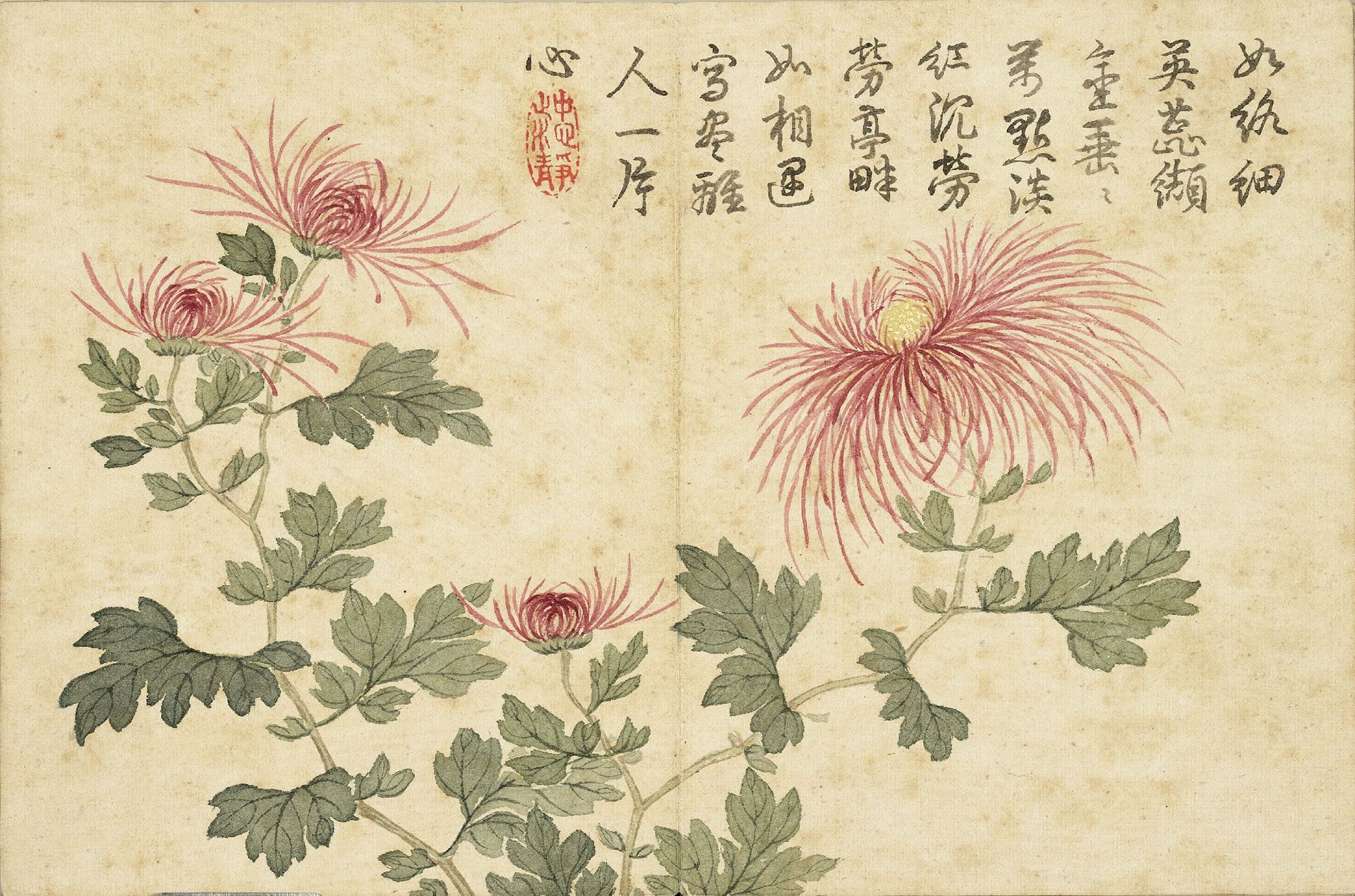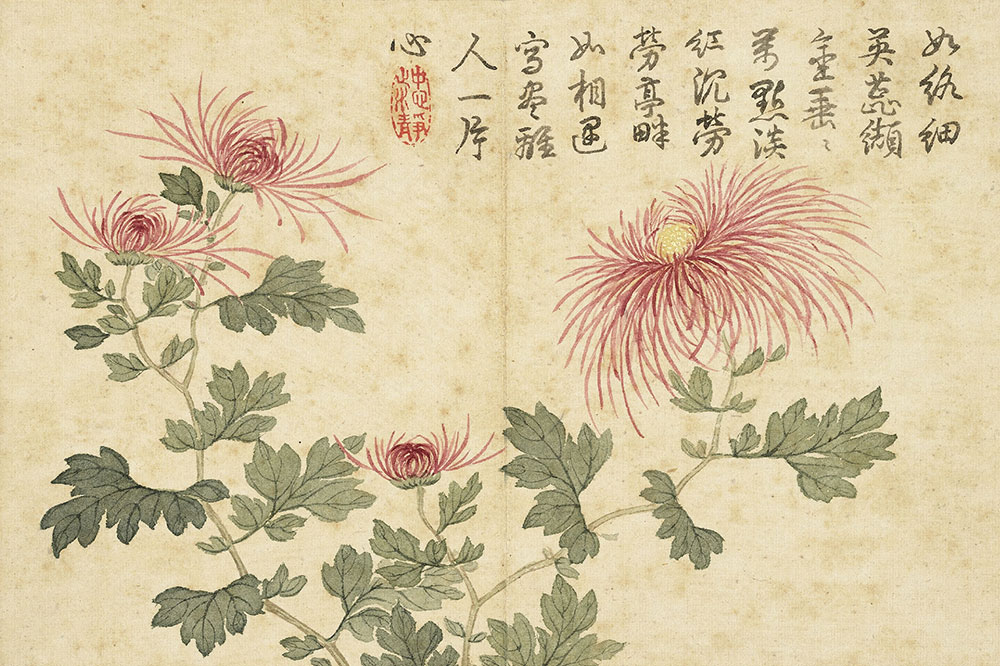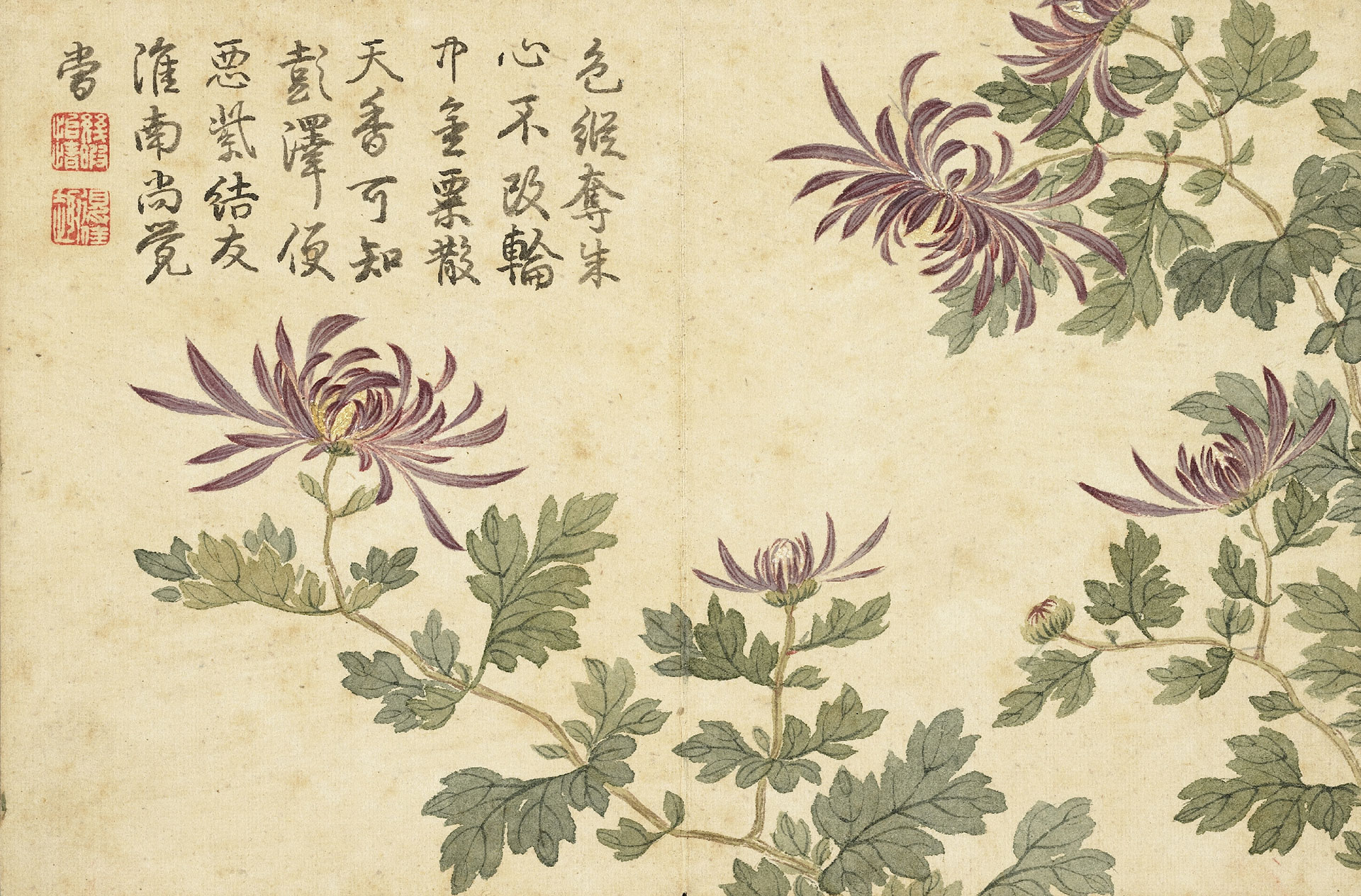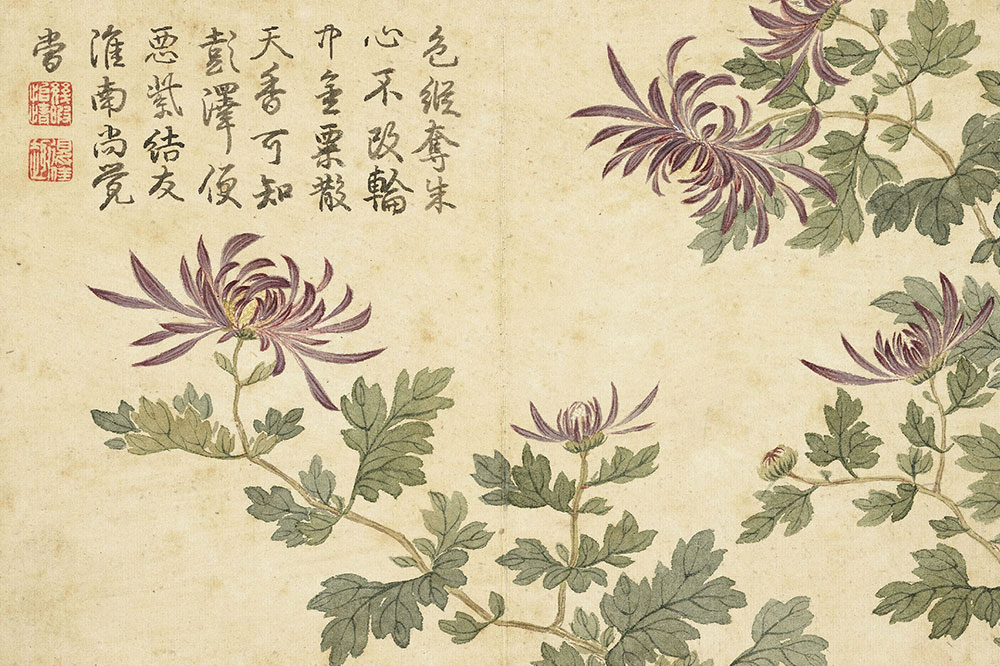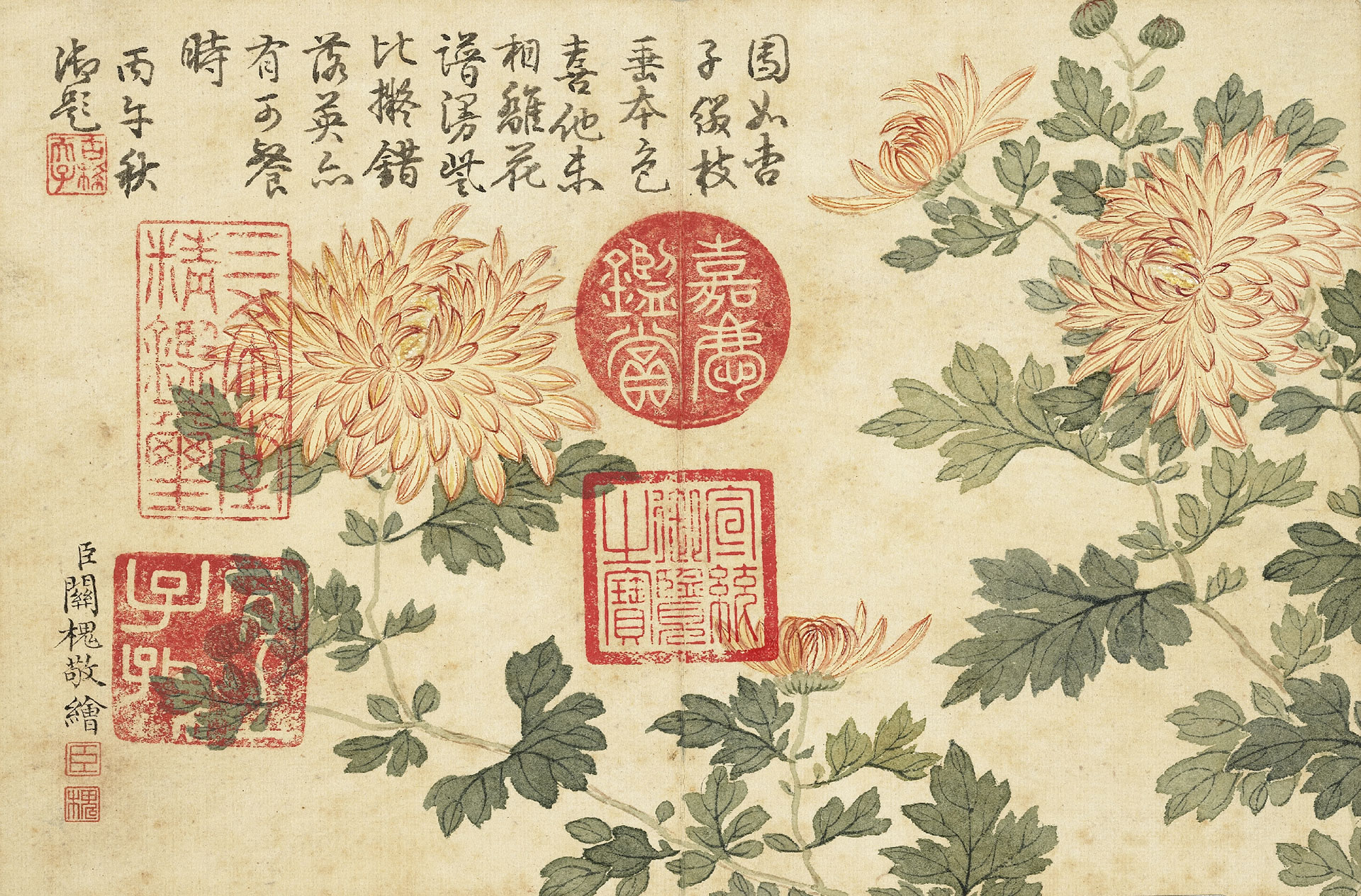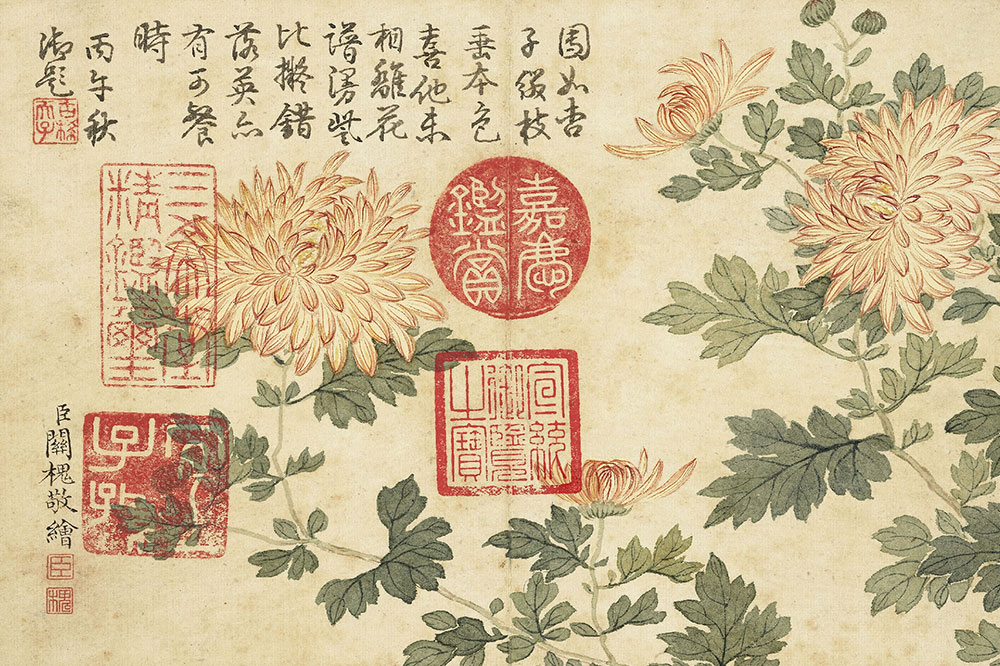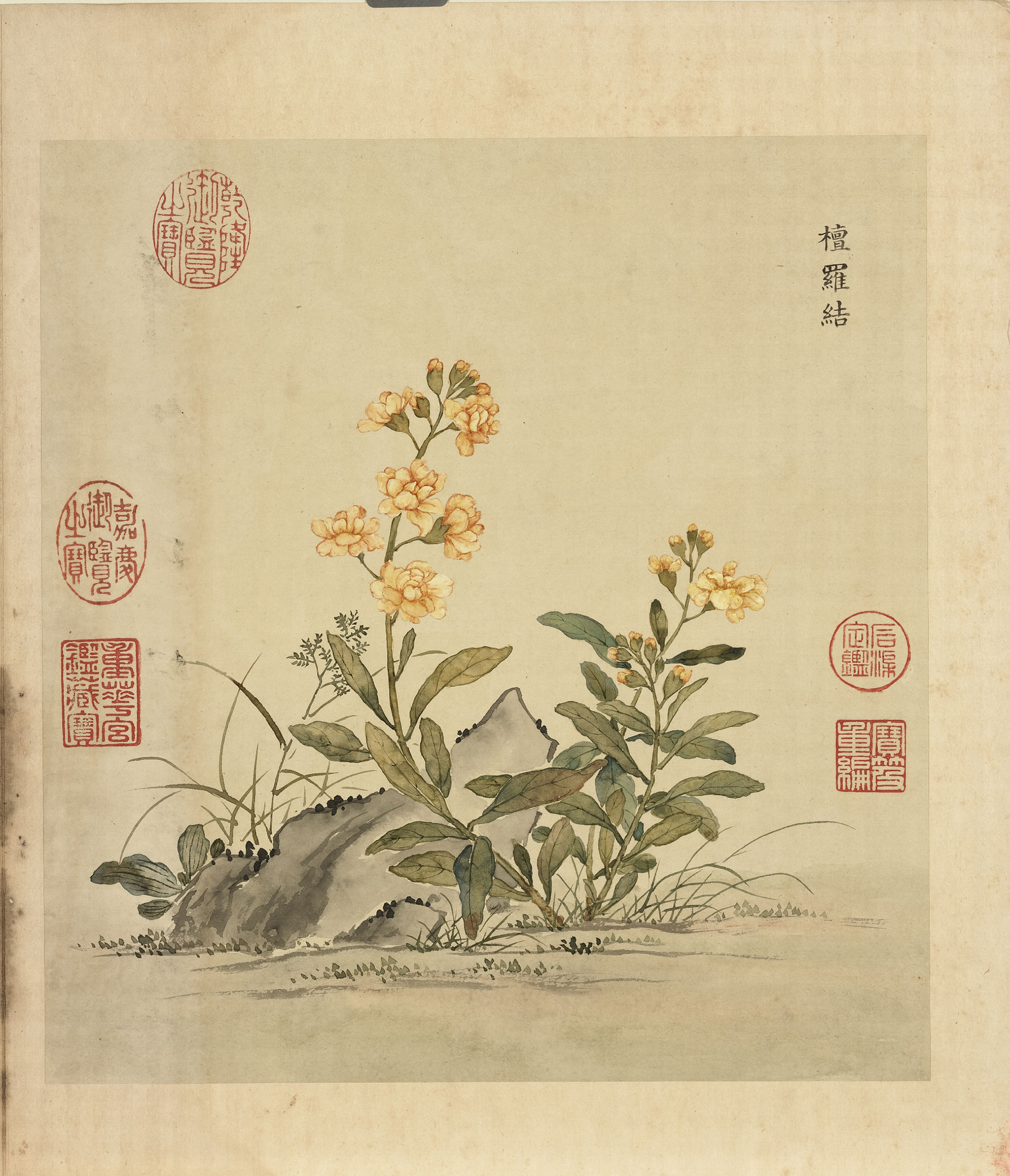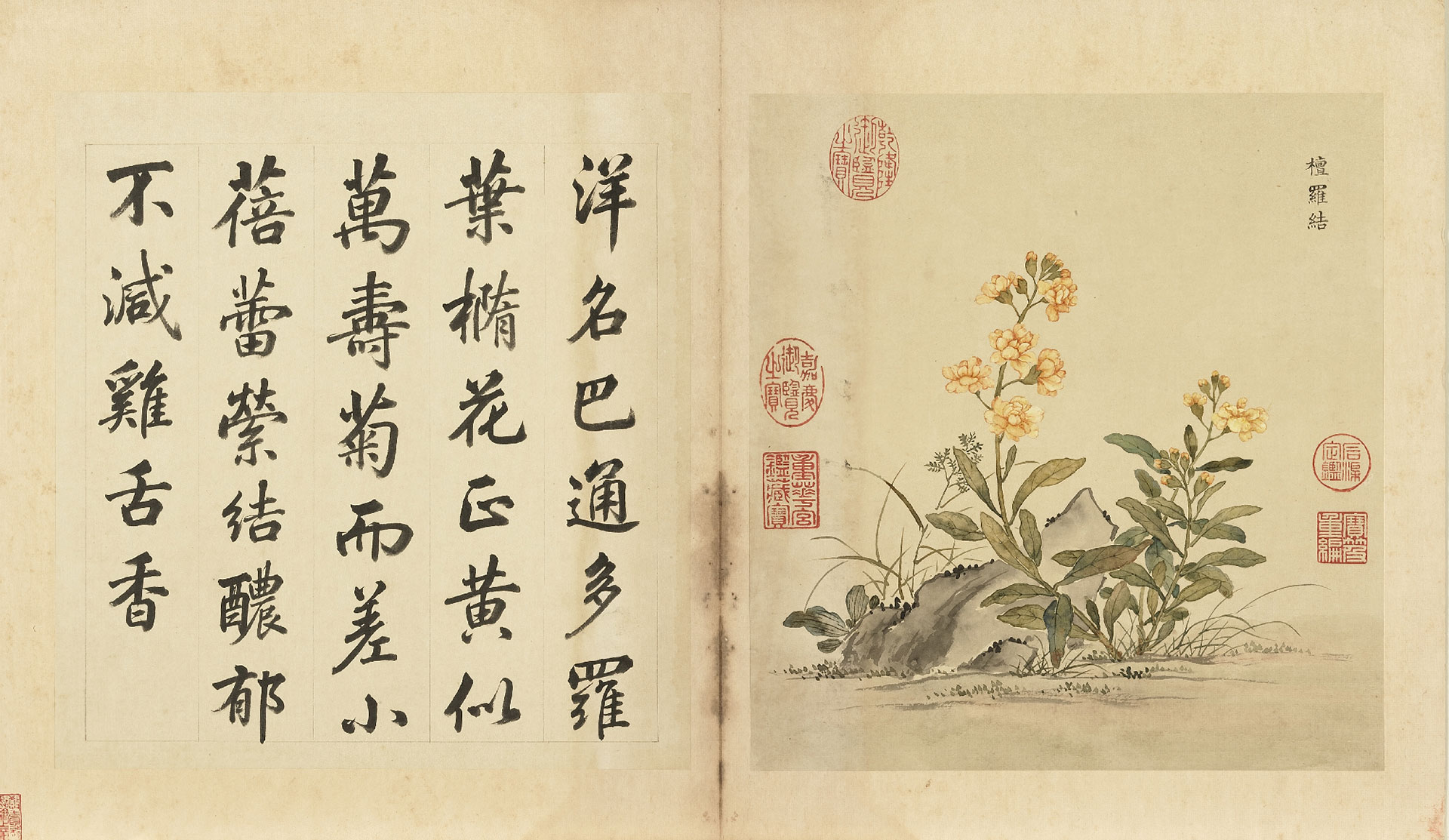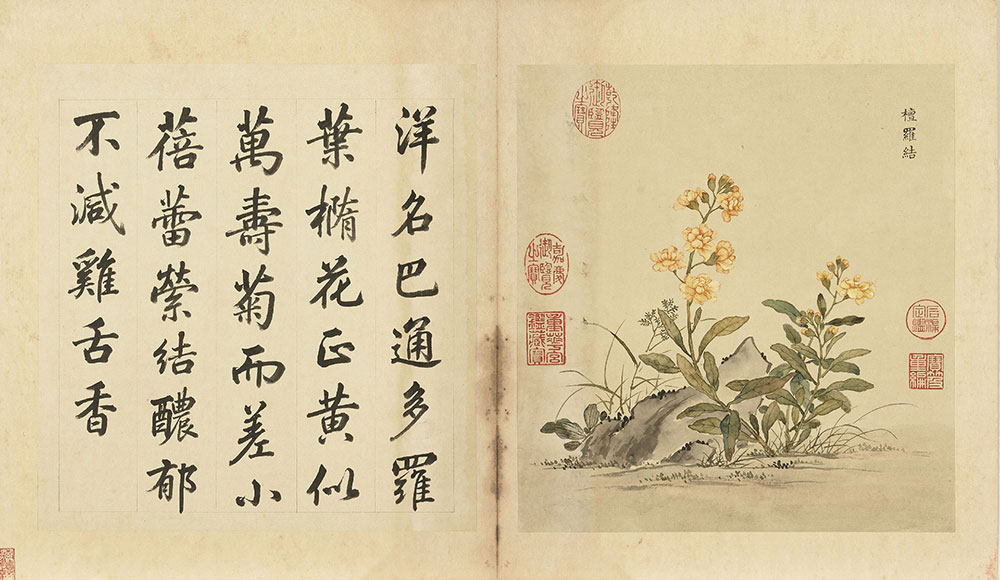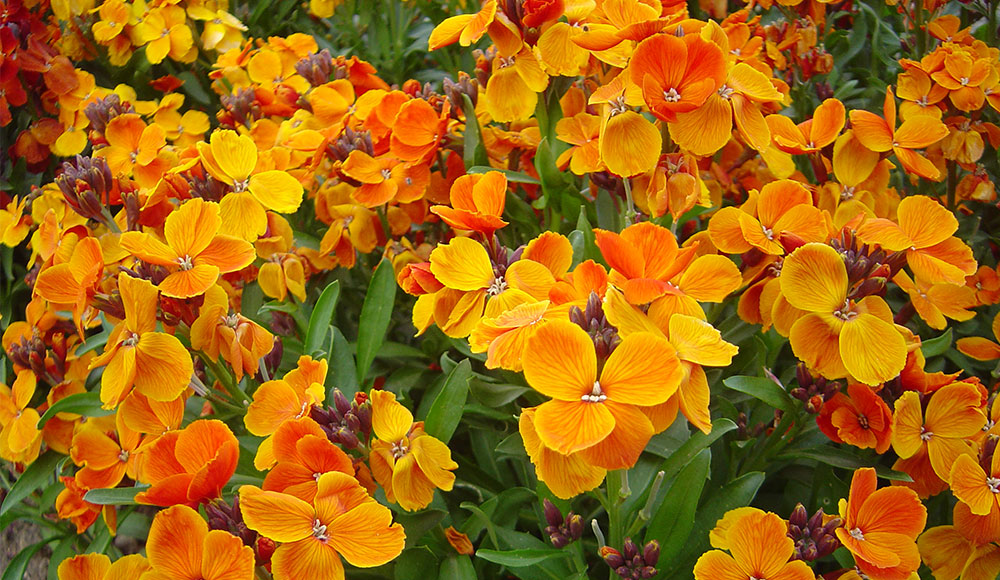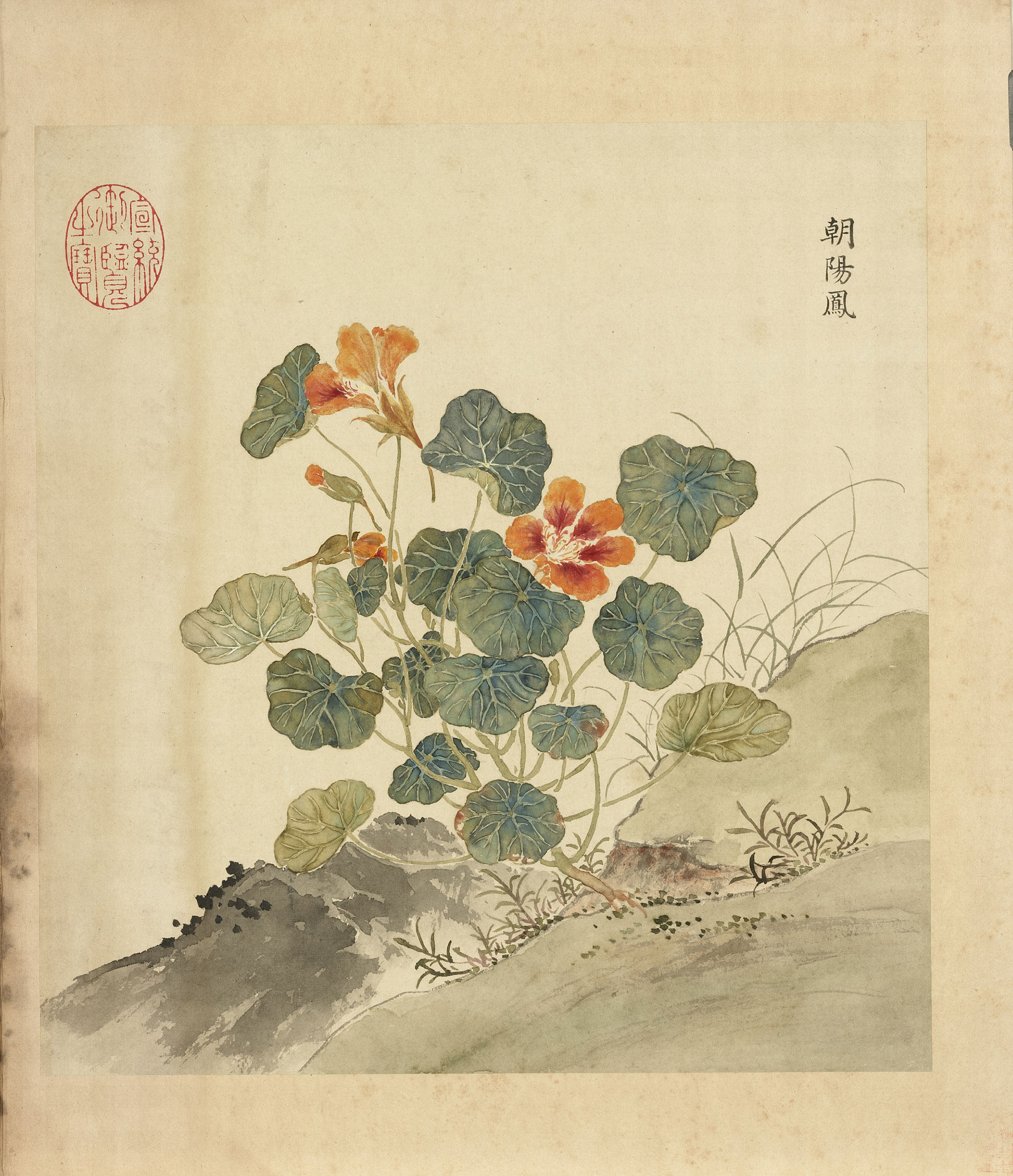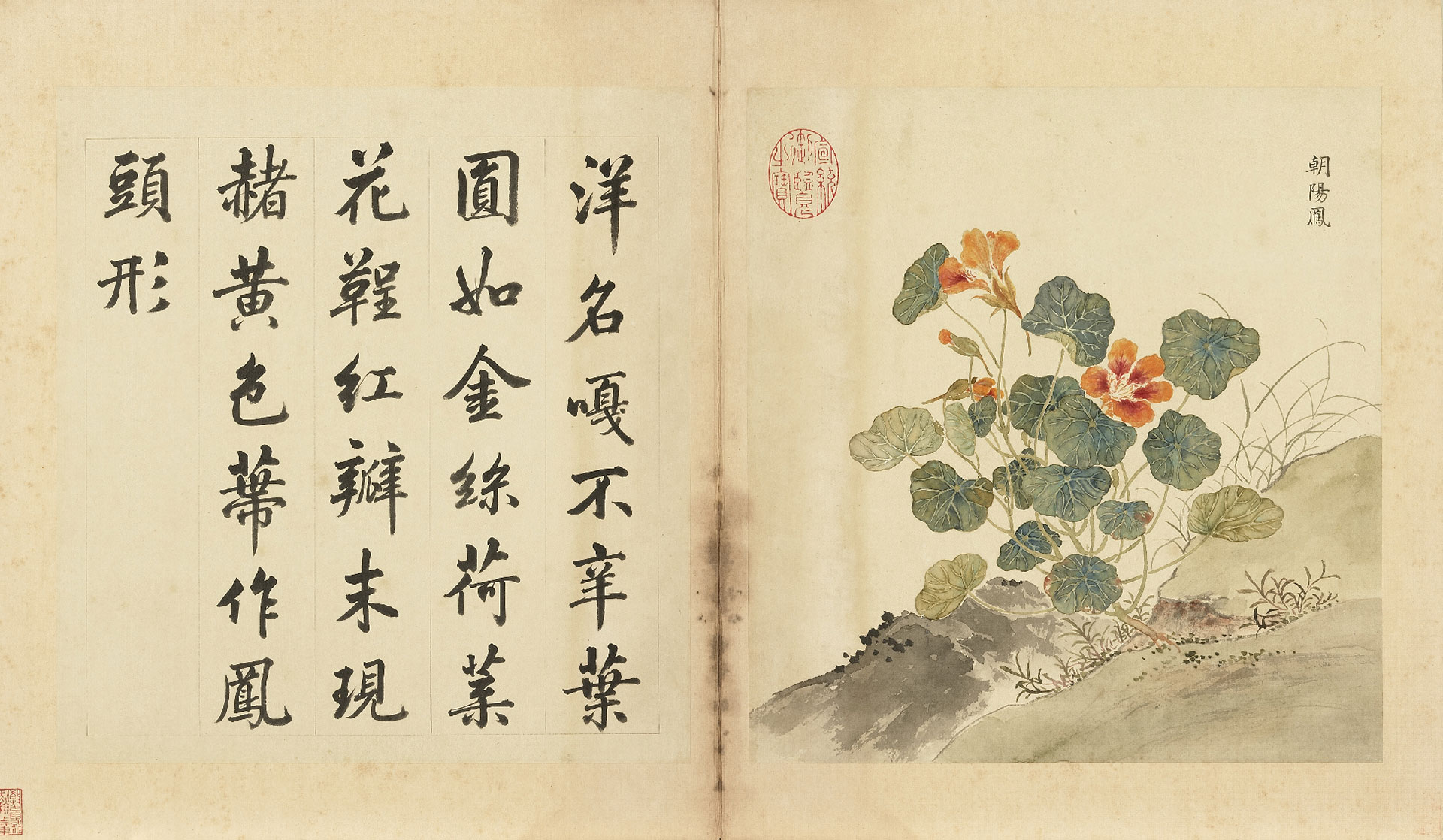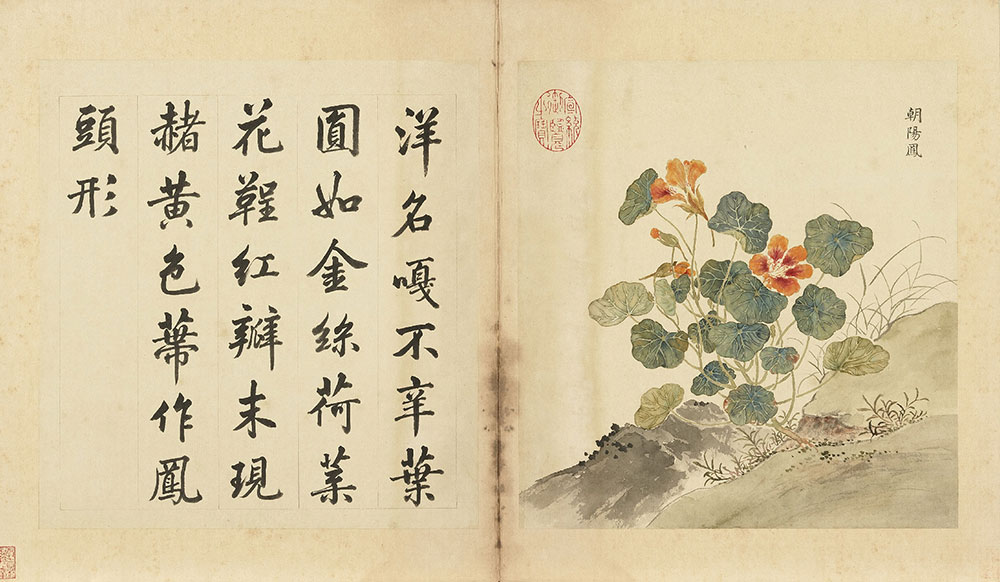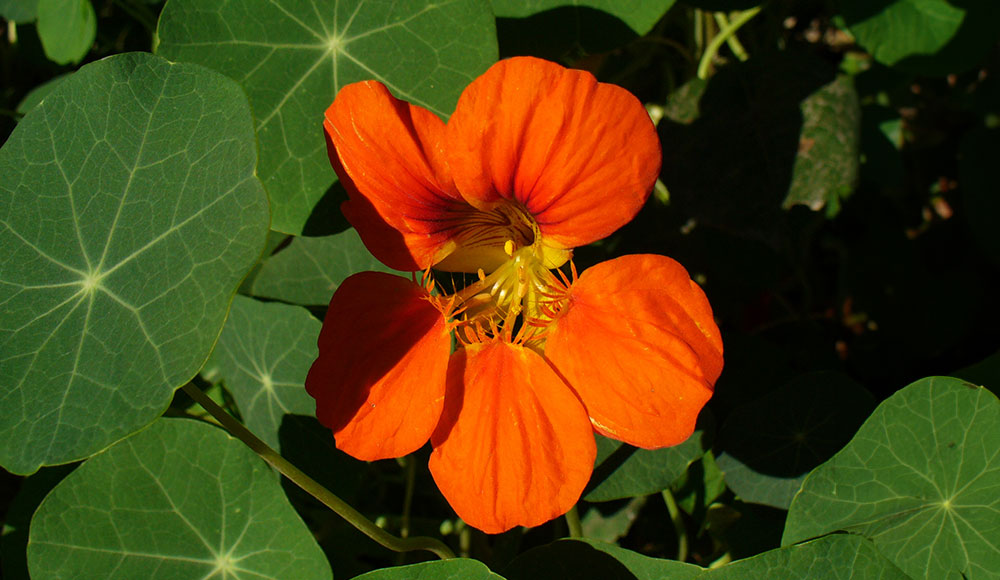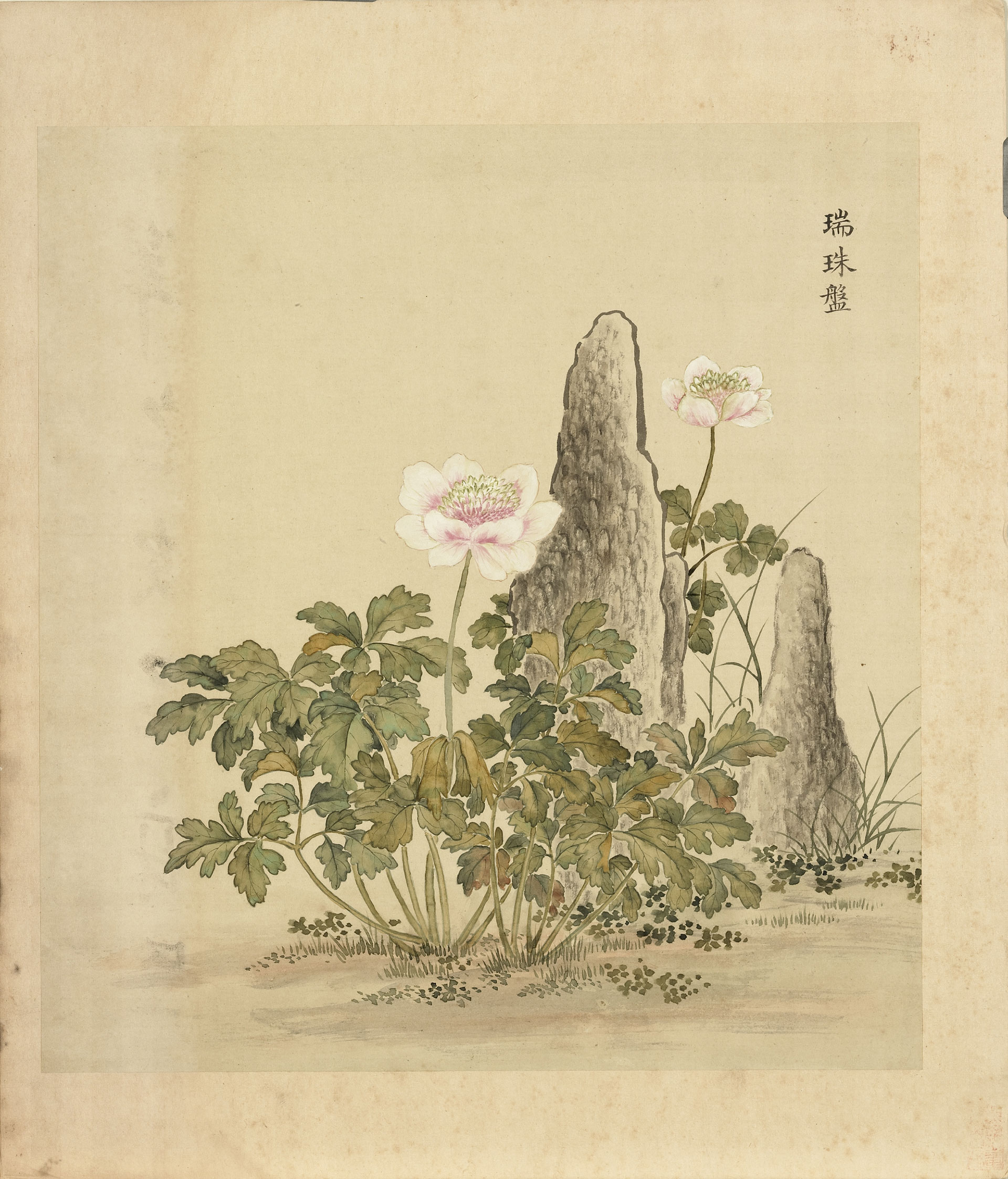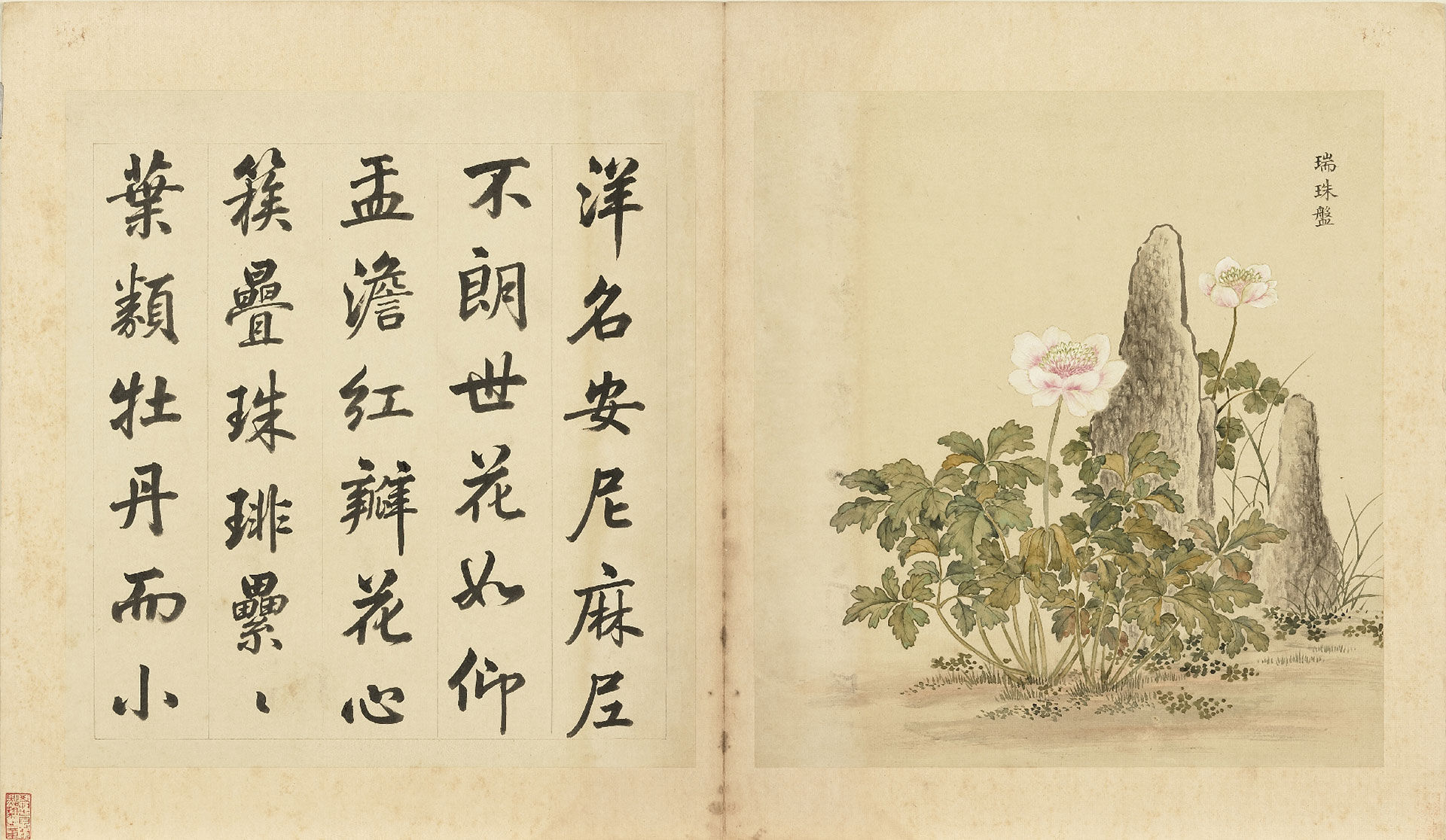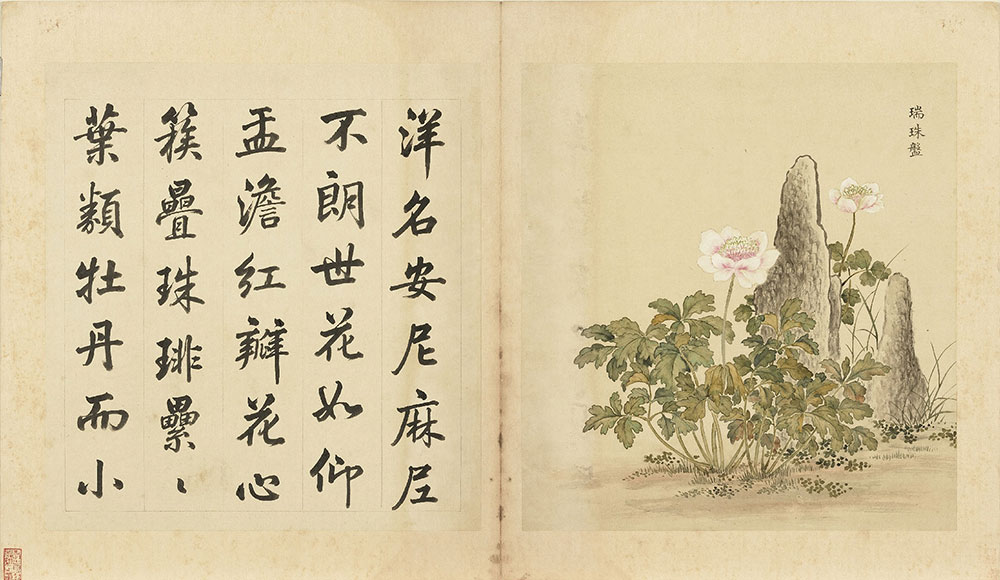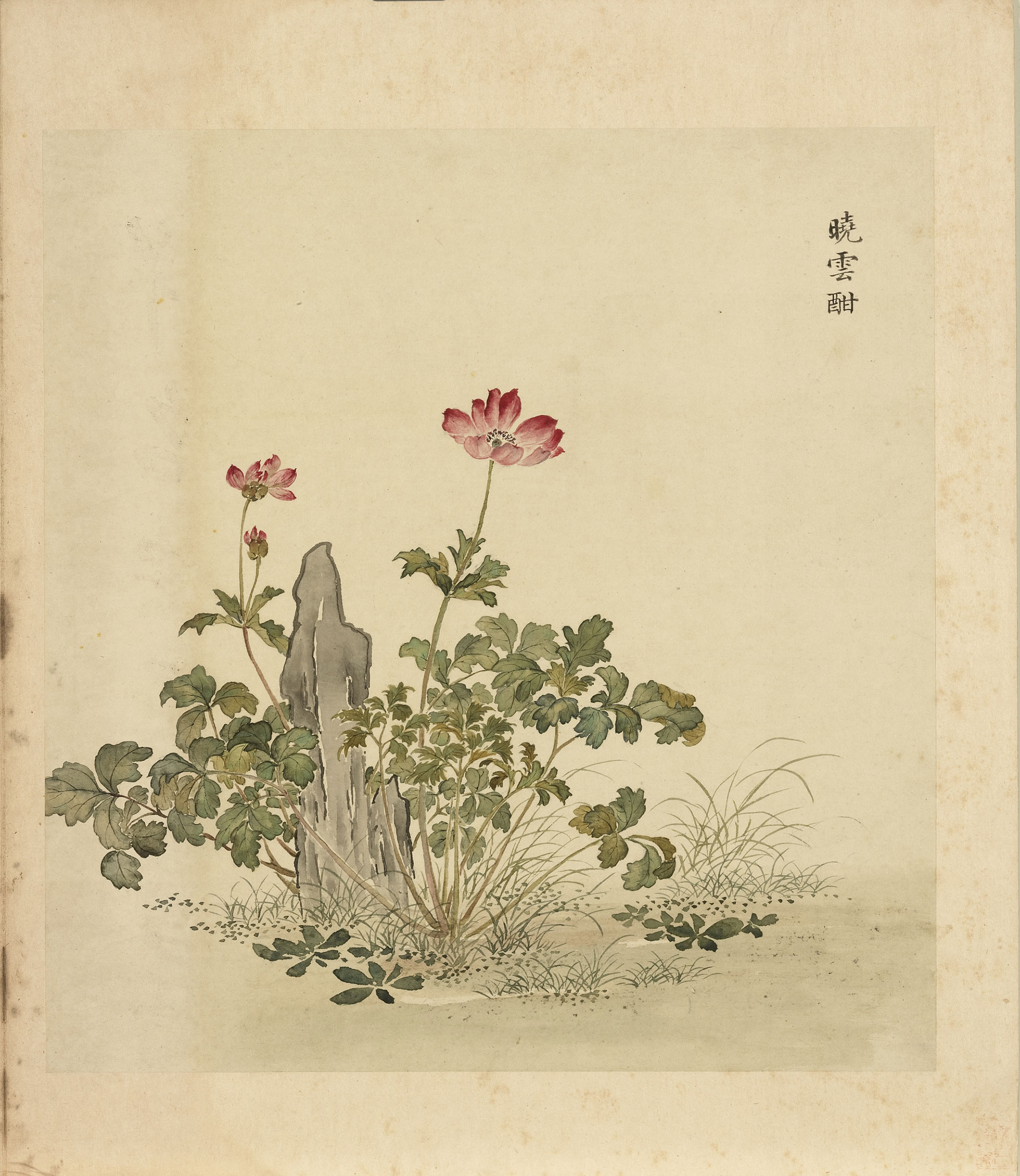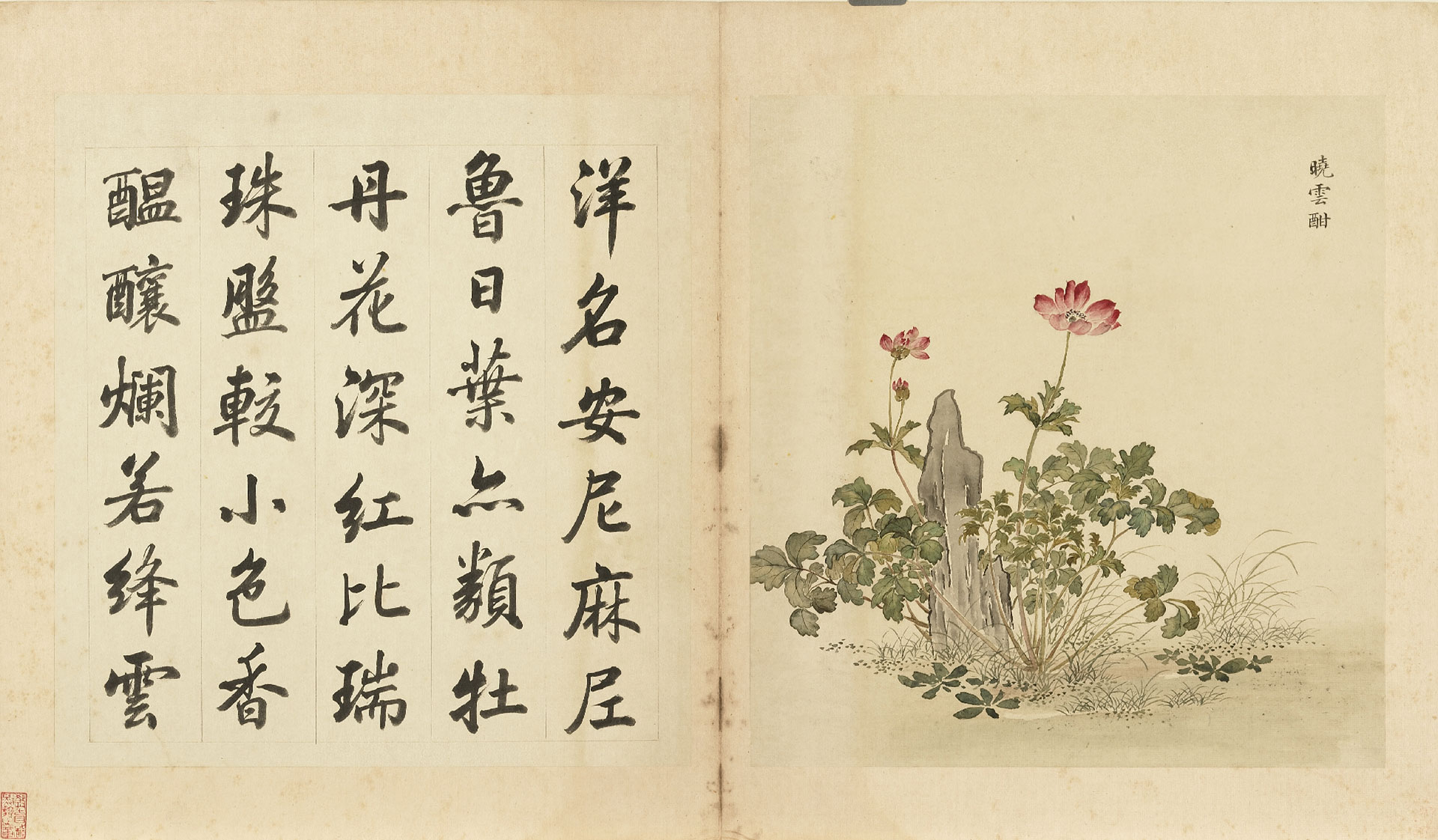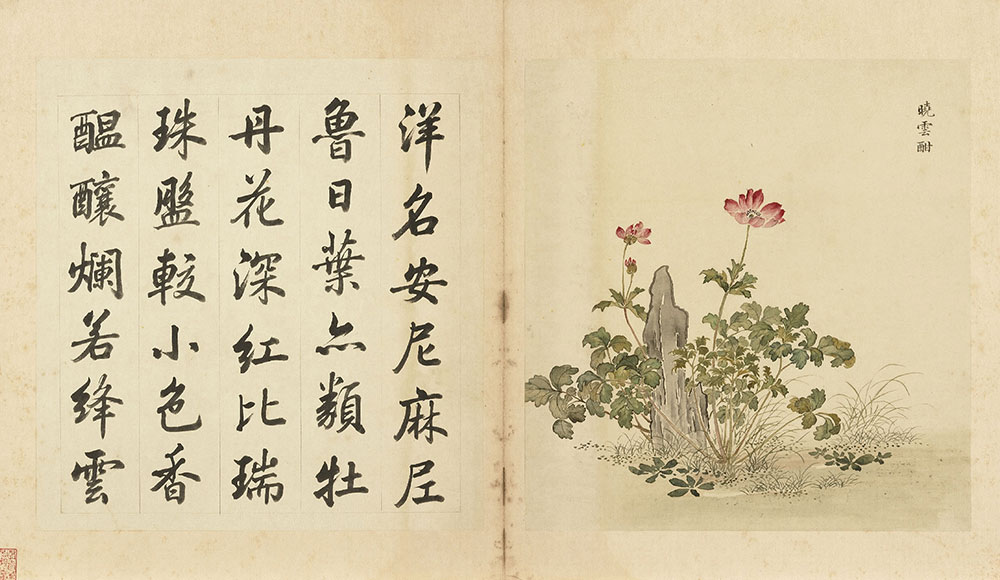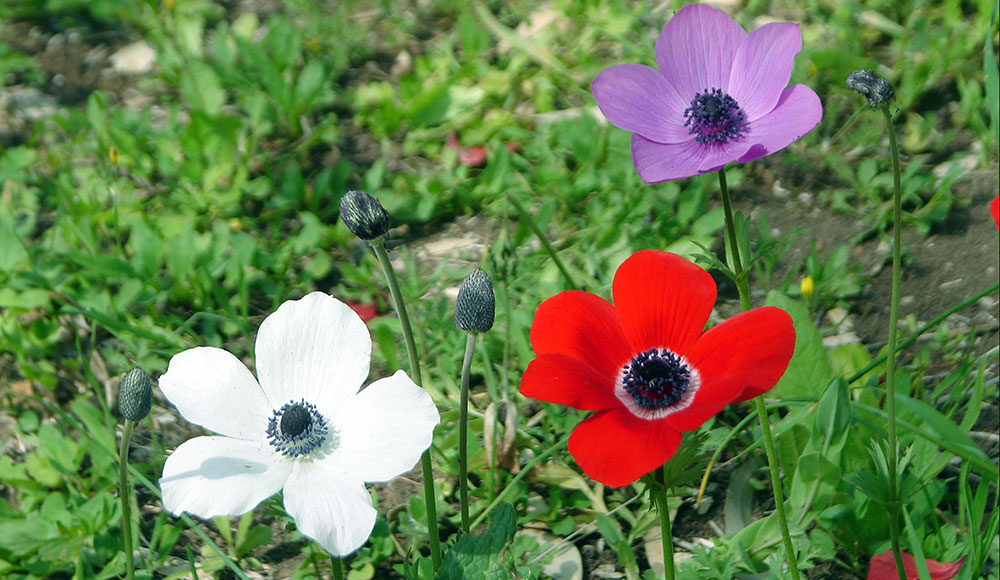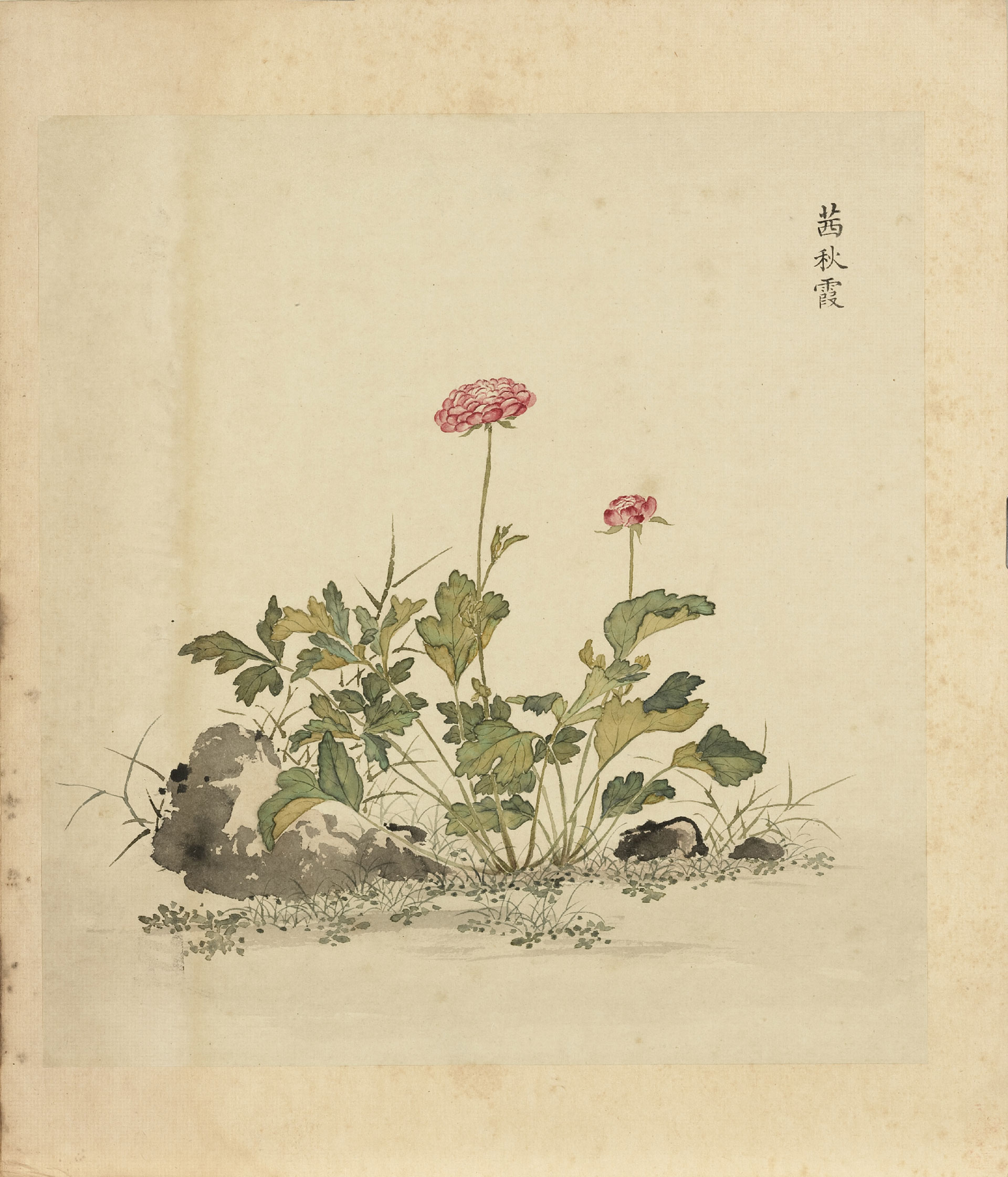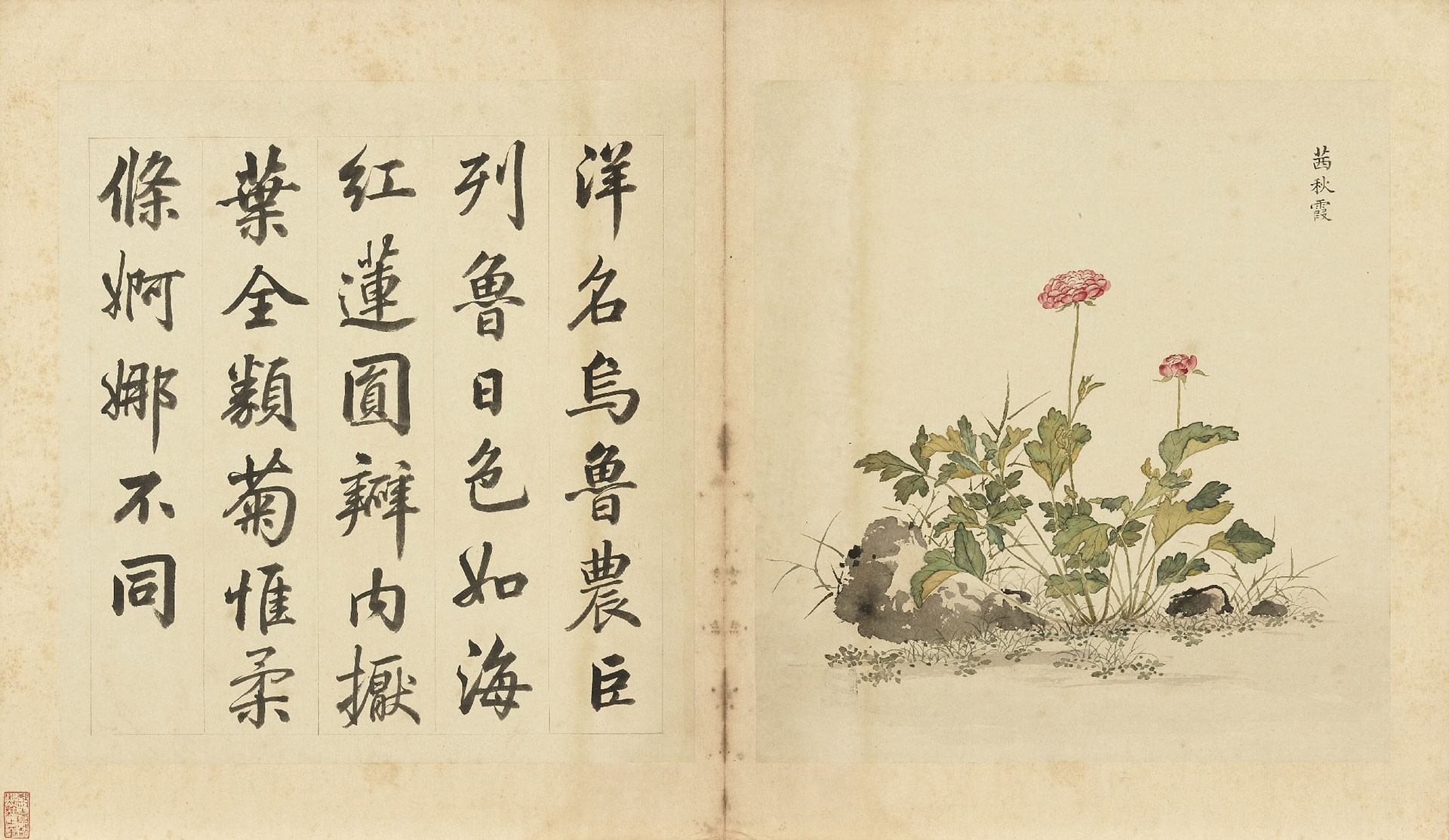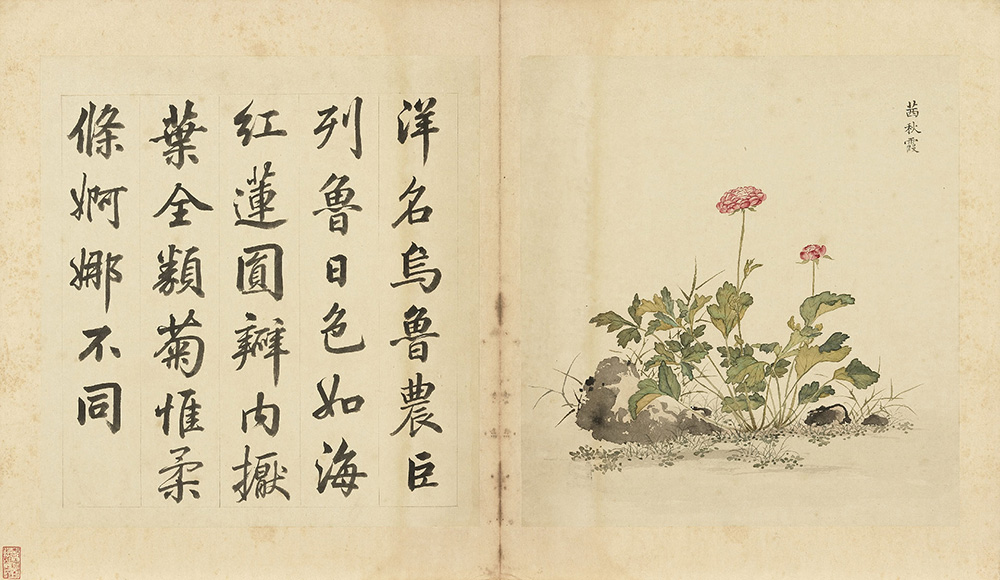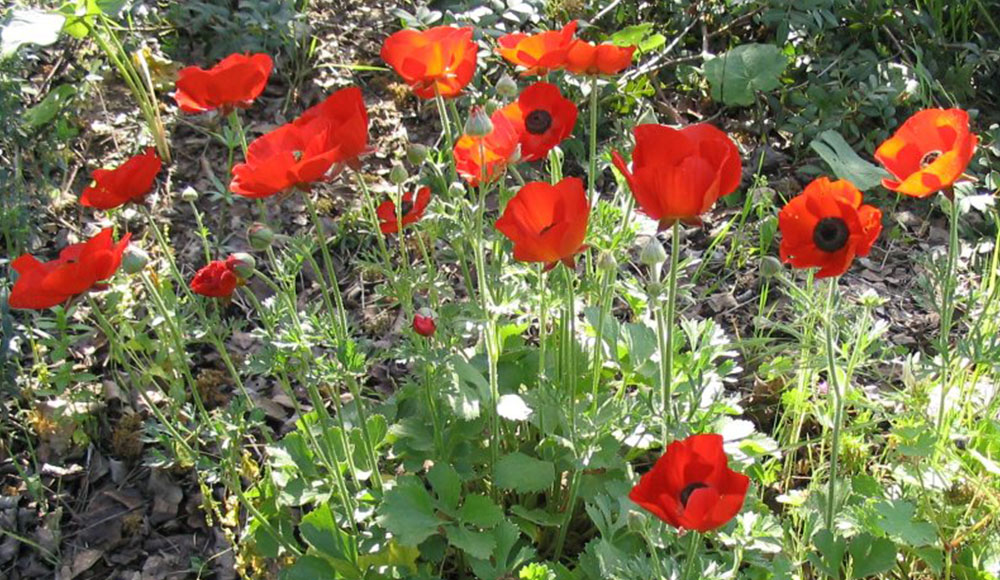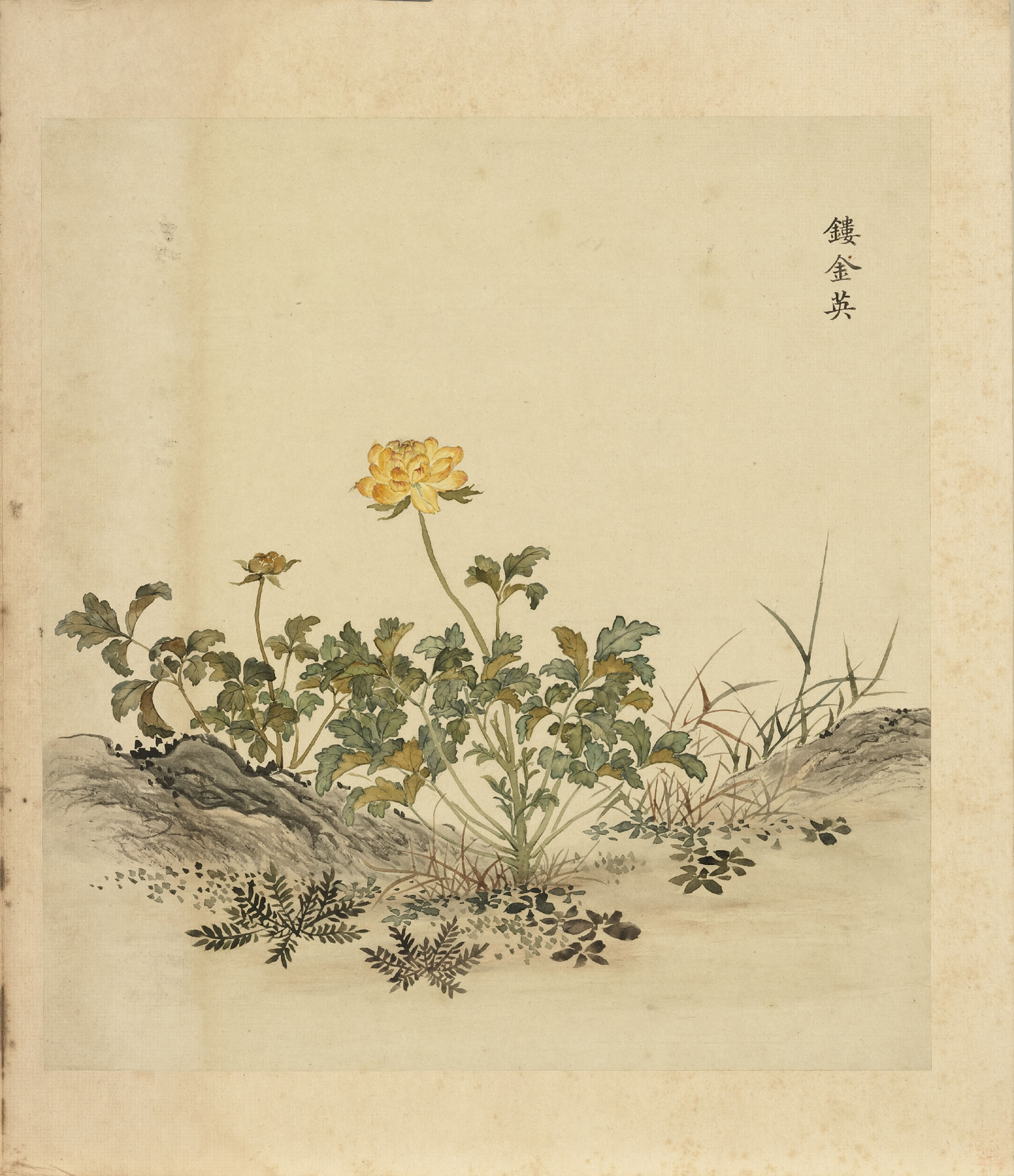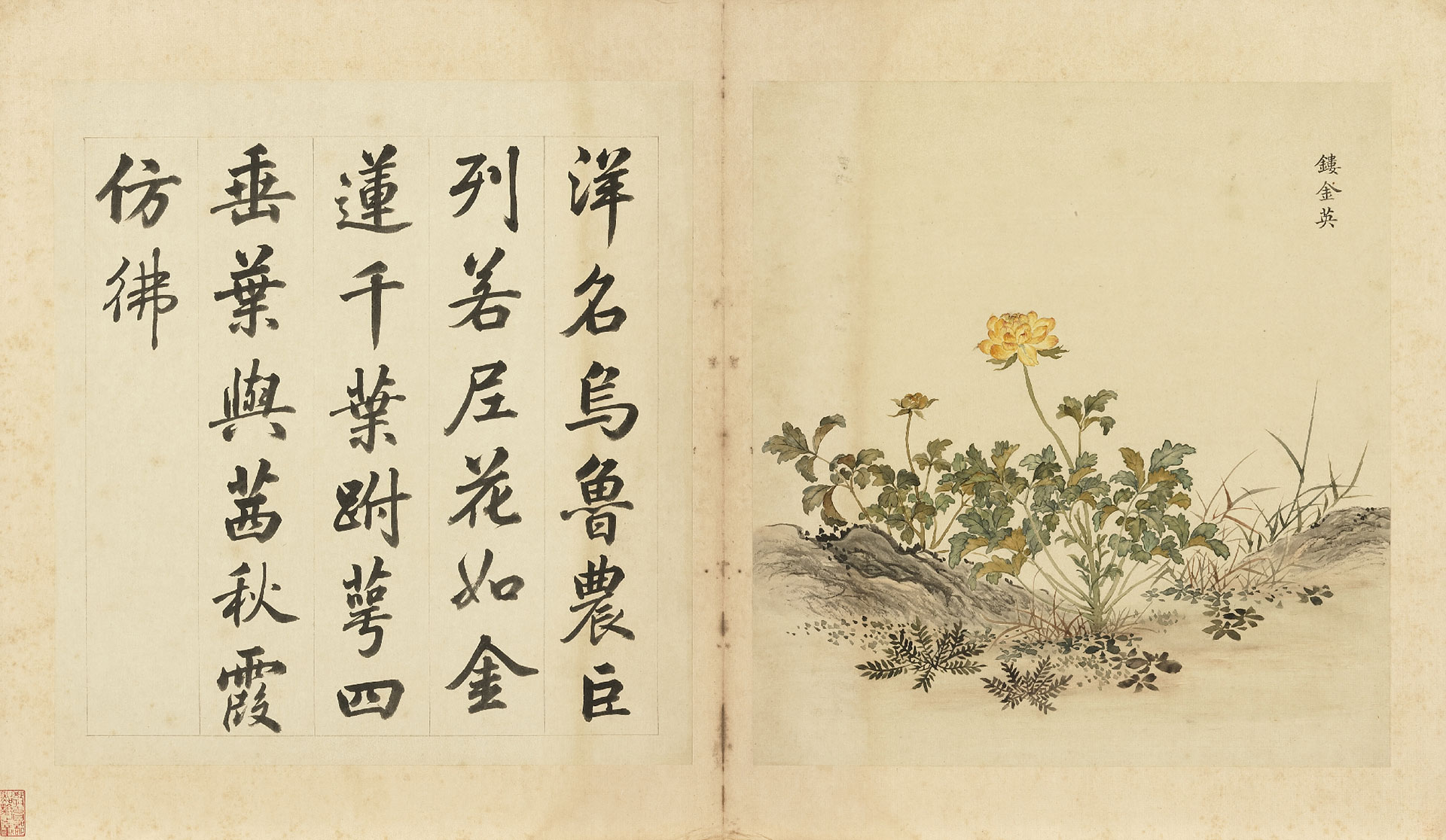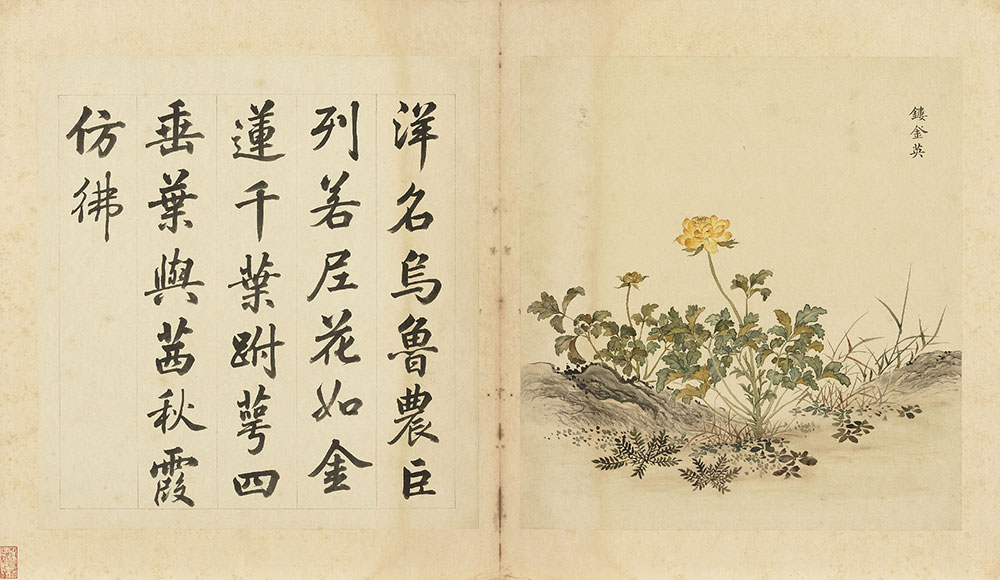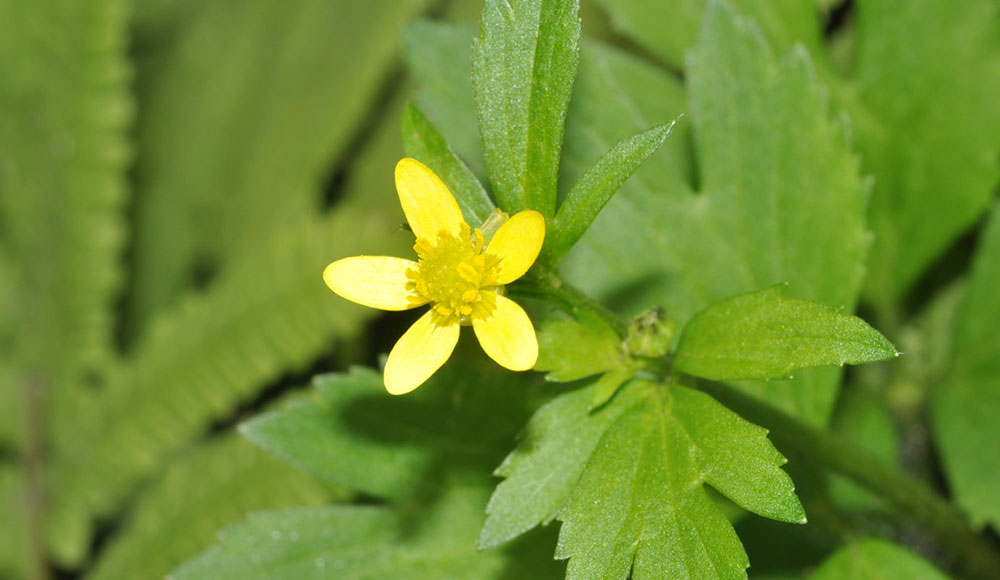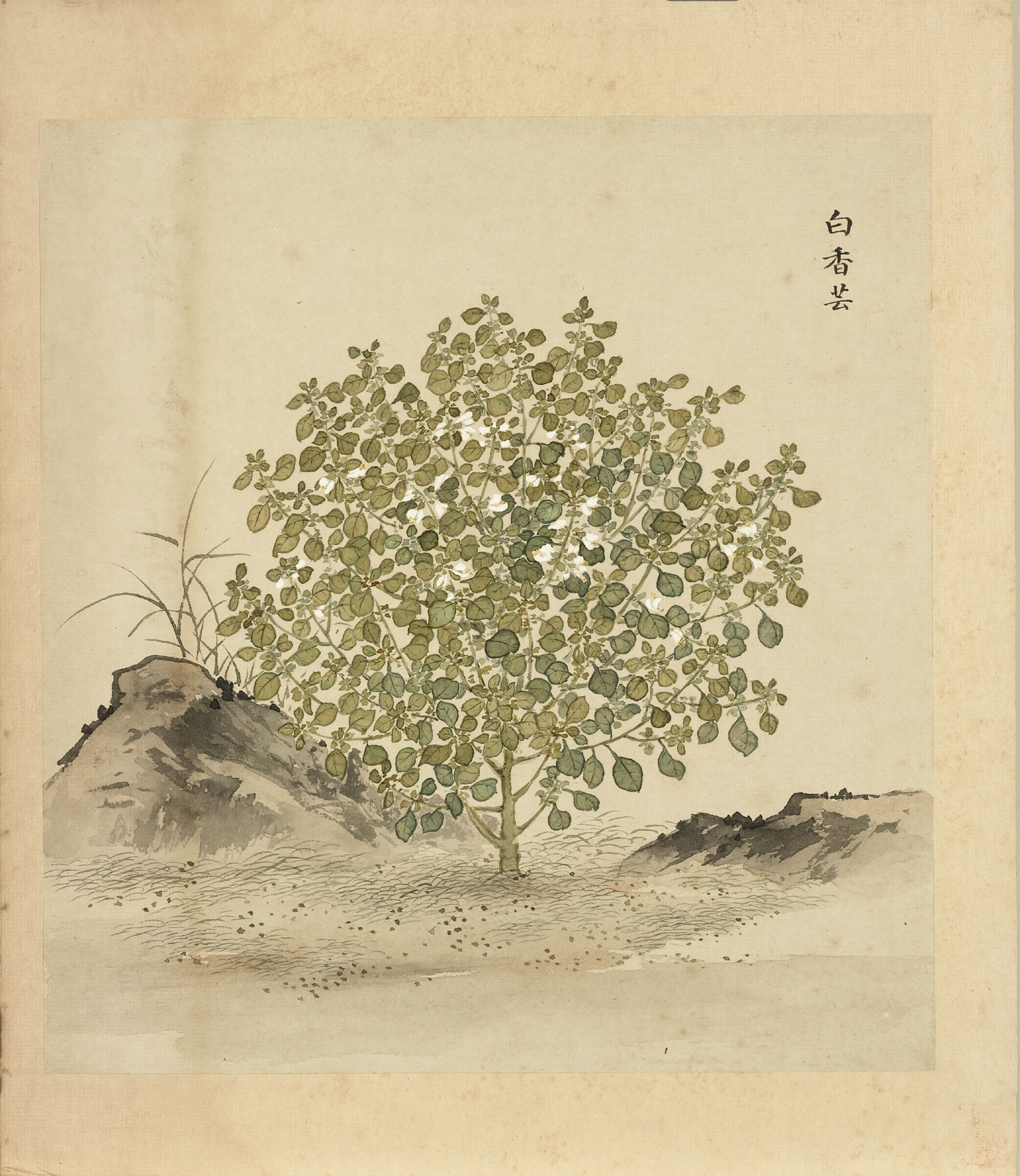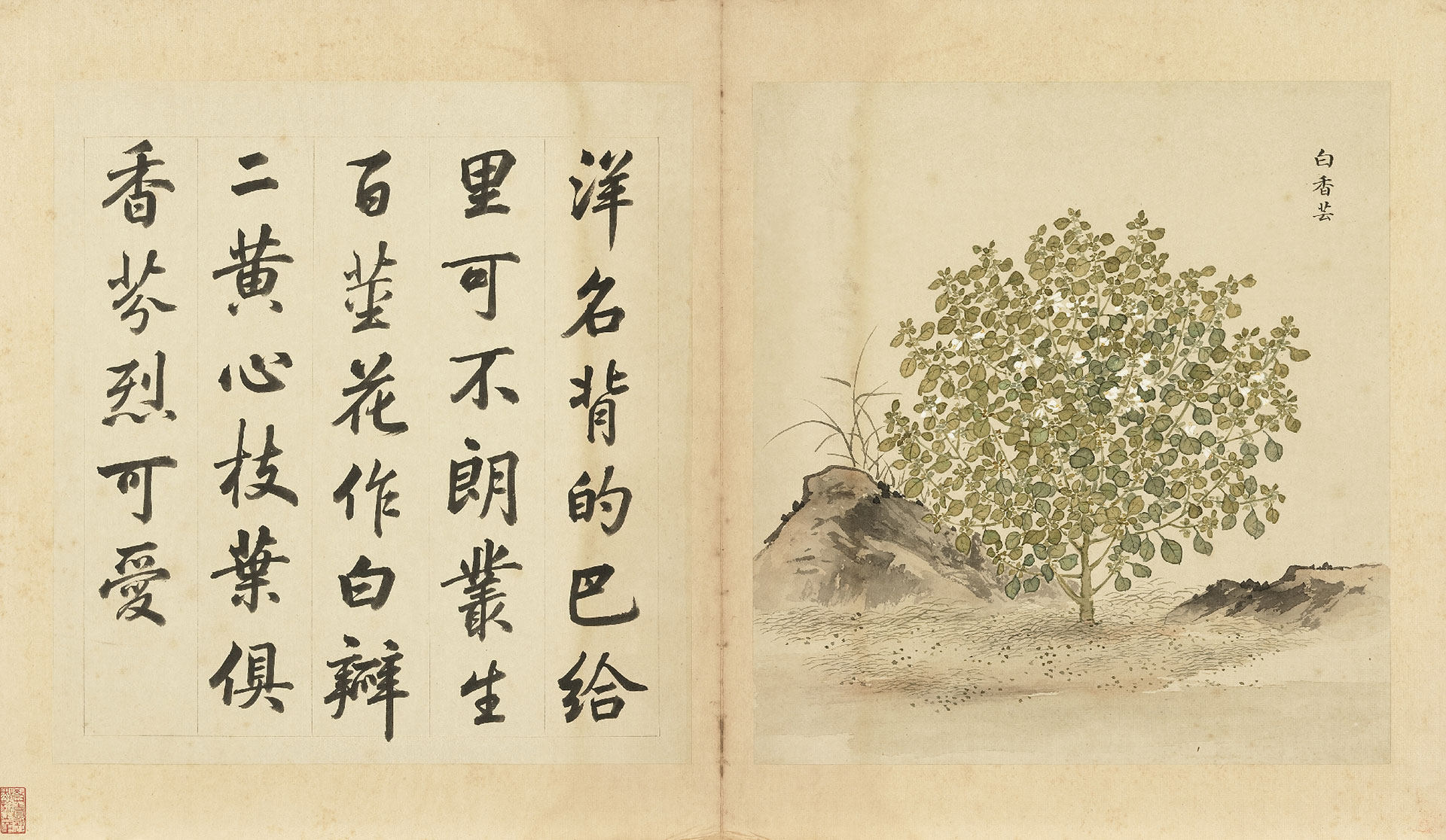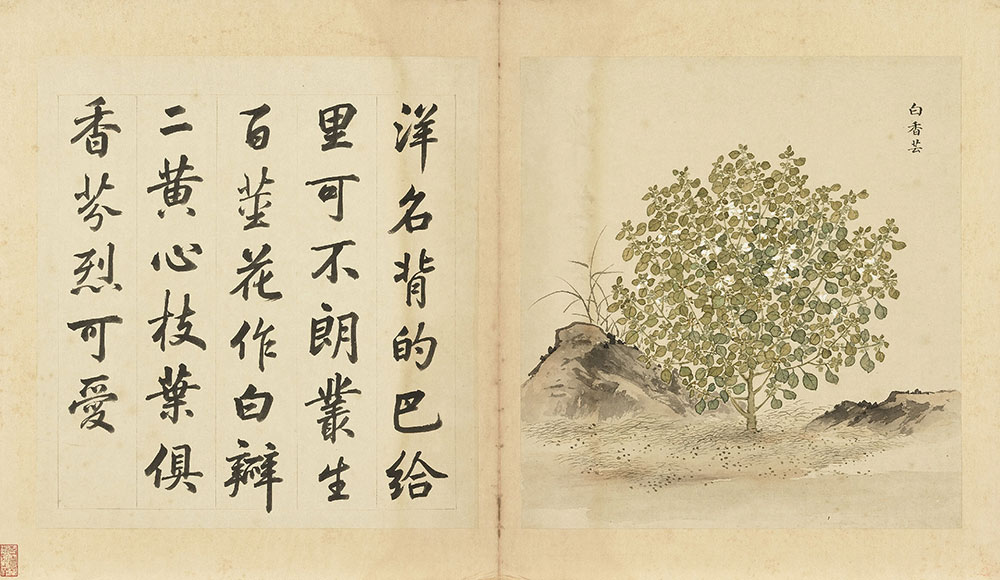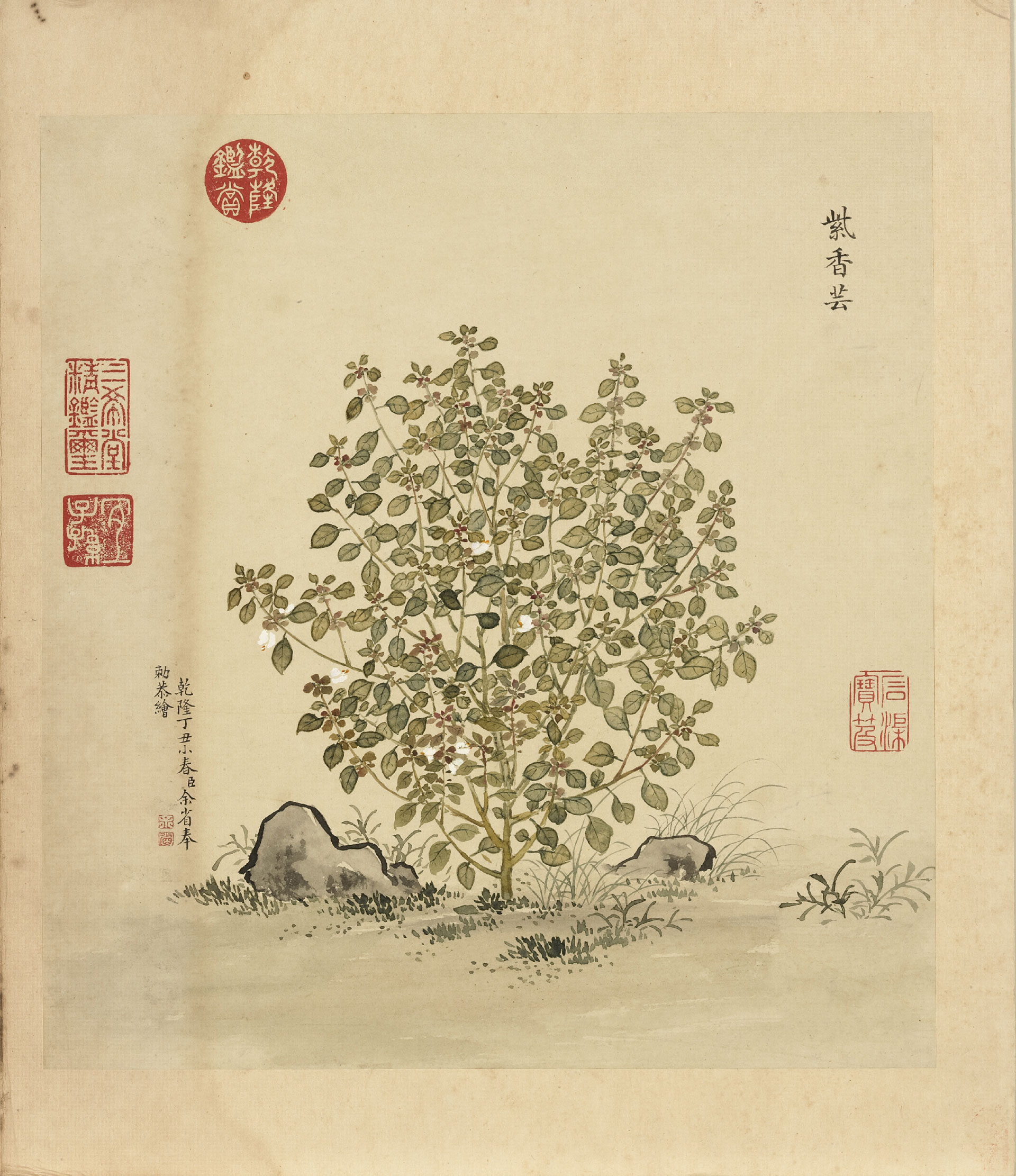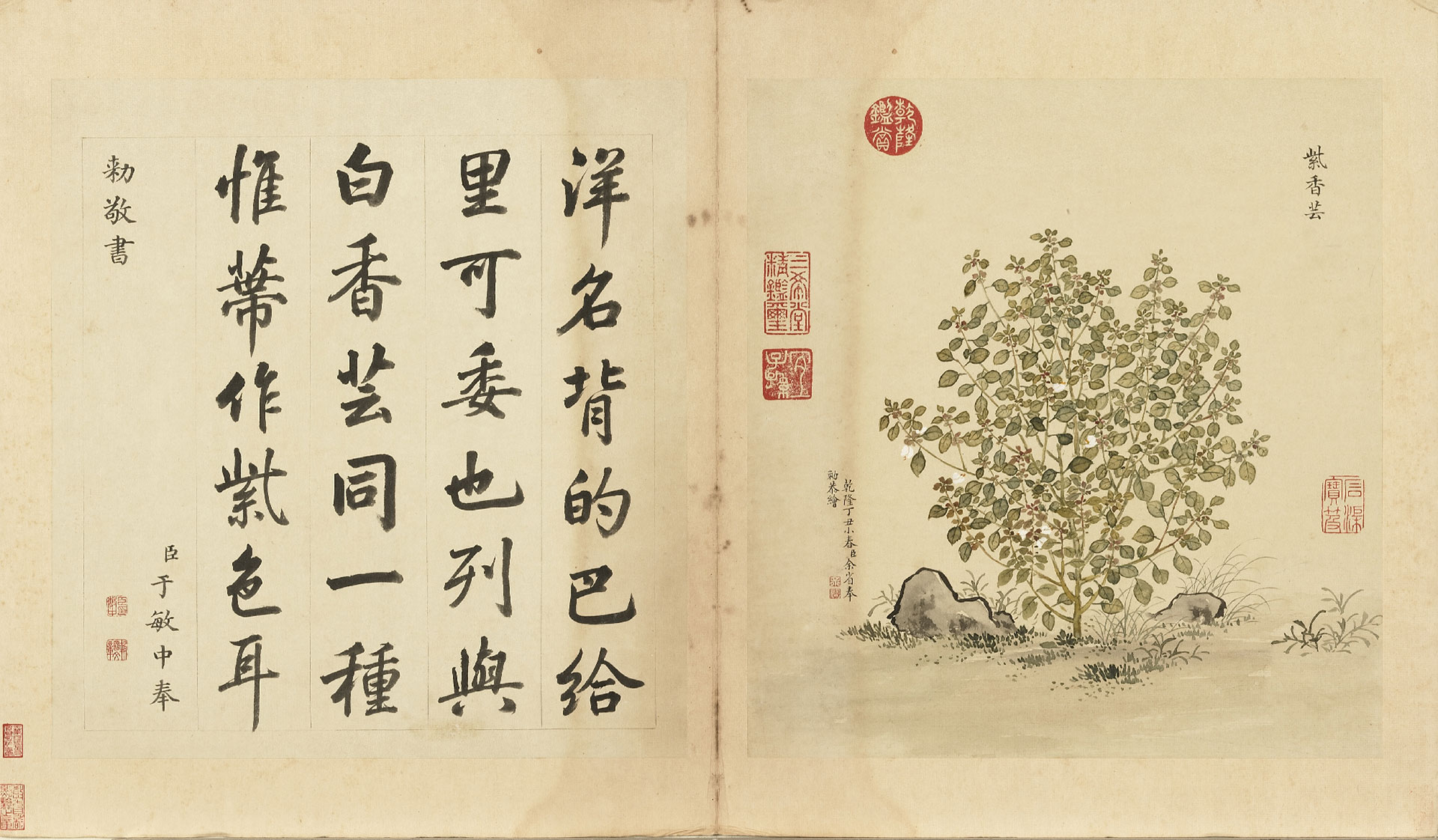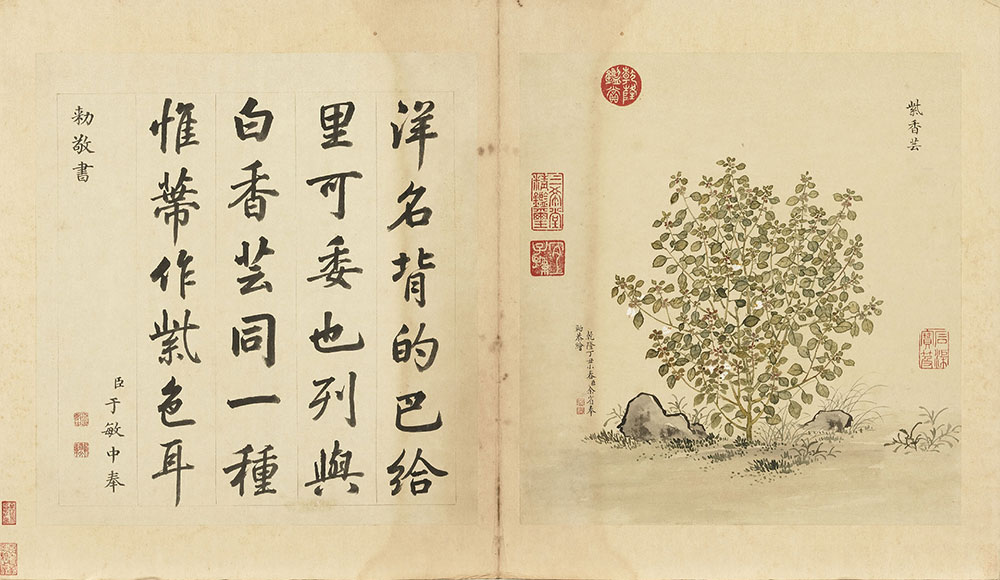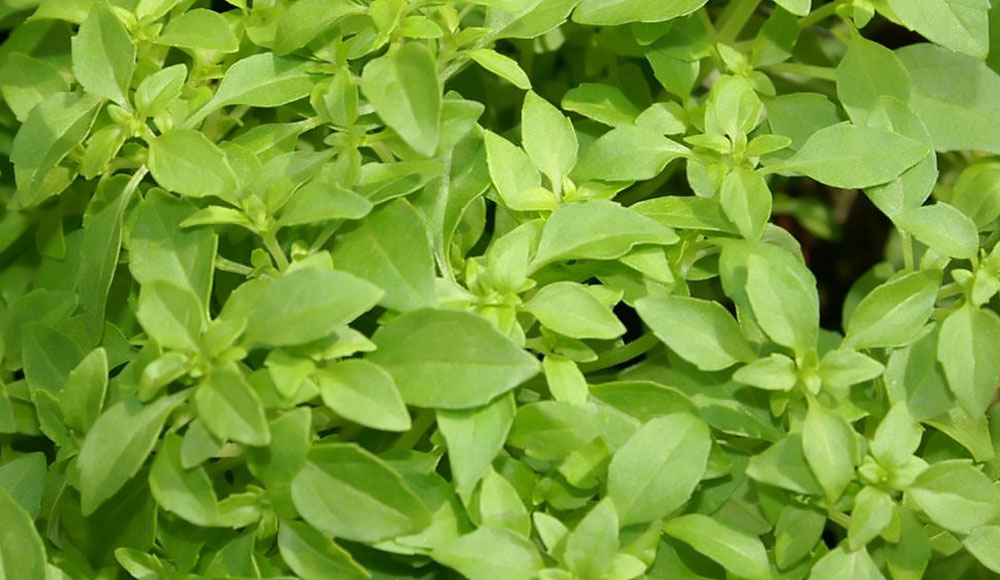Ephemeral Blooms of Flowers from Afar
“Occidental flowers,” was a term that referred to flowers and plants that came to China from western countries. These botanical specimens became a commonly employed theme in Qing dynasty paintings, as well as in the patterns emblazoned upon decorated vessels. Whenever occidental flowers were introduced, in keeping with traditional customs for naming plants, they were given poetic-sounding Chinese names. In terms of taxonomy, these exotic plants and flowers were scrutinized in order to understand their external appearances, unique characteristics, and growth habits. They were then compared with endemic plants and subsequently incorporated into the traditional Chinese system of classification.
Precious occidental flowers that crossed several oceans before making it to the Forbidden City needed to be carefully cared for by palace florists or European missionaries posted to China. Those that failed to flourish and reproduce in Chinese soil were seldom reimported from foreign lands. Although those plants may have only flowered in the imperial palaces for an extremely short time, court painters ensured that their blossoms were preserved forever in their paintings. These artworks themselves went on to form a treasured visual record.
- Foreign Chrysanthemums
- Lang Shining (Giuseppe Castiglione), Qing dynasty
- Paper
Exotic chrysanthemum varietals that were brought to China from abroad were known collectively as “foreign chrysanthemums.” Emperor Qianlong of the Qing dynasty (1711-1799) wrote numerous poems devoted to these flowers, including one that reads, “It’s supposed to be the local species planted by the eastern fence, so why pass it off as an exotic species originating from the west of the sea?” The “west” alluded to in this poem is none other than continental Europe. During Qianlong’s reign, every court painter with a talent for painting flowers and plants created works depicting foreign chrysanthemums, leaving behind a record of these flowers’ unique appearances.
This piece was painted by Giuseppe Castiglione (1688-1766), whose Chinese name was Lang Shining. This painting of cuttings of the stems, blossoms, and leaves of foreign chrysanthemums might be the one noted in the official records of artworks and handicrafts commissioned by the emperor under the entry, “One paper scroll depicting chrysanthemums by Lang Shining.” Heavy applications of colored paints were used to portray the flowers, while varying proportion of white paint or black ink were added in exquisite washes to depict the surficial and deeper layers of petals. Here we see how a missionary from Europe used occidental painting styles that emphasize contrasts between dark and light to offer an interpretation of this exotic flower from afar.
- Foreign Chrysanthemums
- Qian Weicheng, Qing dynasty
- Paper
Emperor Qianlong once said, “A variety of different foreign chrysanthemums began budding in recent years. Some of their flowers are up to 30cm in circumference, unlike anything seen in the past.” His observation demonstrates that numerous foreign chrysanthemum varietals made it to the palace, and that their blossoms were larger than the varietals traditionally found in China. During Qianlong’s reign, his scholar-attendant Zou Yigui (1686-1772) wrote in his book A Guide to Chrysanthemums that that many so-called “foreign chrysanthemums” may actually in fact have been bred in China from endemic varietals and then passed off as exotic imports.
Qian Weicheng (1720-1772) was awarded the rank of presented scholar when he obtained the highest score on the imperial examinations in the tenth year of Qianlong’s reign (1745). A scholar-attendant and court painter in service of the emperor, he learned flower-and-plants painting from Chen Shu (1660-1736), a female elder in his family. Qian painted this depiction of five different types of foreign chrysanthemums using the “boneless” (mogu) technique, which deemphasizes the flowers’ outlines. Cuttings of such smaller flowers as catchfly (Lychnis fulgens), Asiatic dayflower (Commelina communis), and African marigold (Tagetes erecta) accentuate the chrysanthemums’ impressive size. The unusual tubular flower petals seen in this painting are described in texts on gardening dating to Japan’s Edo period, suggesting that some of the “foreign chrysanthemums” imported to the Qing dynasty palaces may actually have come from Japan.
- Guan Huai, Qing dynasty
- Paper
Emperor Qianlong wrote poems devoted to “foreign chrysanthemums” on many occasions. In fact, he even wrote a collection named for the specimens growing in the Chengde Mountain Resort, a palace the Qing emperors retreated to in the summertime to avoid the heat of Beijing. Its title, “Forty-four Poems on Foreign Chrysanthemums,” indicates just how great a variety of exotic chrysanthemums were planted in the Qing dynasty palace gardens. “An Album of Foreign Chrysanthemums” comprises eight leaves, with the upper portion of each leaf inscribed with poems Qianlong wrote in the autumn of 1786. Each of the blossoms depicted in this album was imported to the Chengde Mountain Resort.
Guan Huai (ca. 18th century) passed the imperial examinations in the 45th year of Qianlong’s reign (1780), obtaining first place in the second rank of the portion of the exams directly administered by the emperor himself; he went on to serve as a scholar-attendant as well as a court painter. For this album he painted nine different foreign chrysanthemum varietals using the unoutlined “boneless” (mogu) technique. Compared with the plants’ leaves, which were painted with applications of a single color, the blossoms have much more luscious and richly varied appearances. This album is roughly the size of the palm of one’s hand. Guan may have intentionally chosen such small dimensions in the hope that the emperor might carry the album with him on flower appreciation excursions.
- Yu Xing, Qing dynasty
- Paper
“A Collection of Plants from Across the Western Sea” was created on commission by the court painter Yu Xing (fl. 18th century) during the twenty-second year of Emperor Qianlong’s reign (1757). It portrays a total of eight different species of flowering plants imported from Europe that were once seen in the palace gardens. Moreover, each leaf features an inscription with the plants’ Chinese names, Sinicized foreign names, and growth characteristics written by Yu Minzhong (1717-1779), who served as academician of the grand secretariat. These concise introductions include comparisons with the appearances of plants and flowers endemic to China, allowing those who view the album to envision the appearances of exotic flowers with the aid of text and illustrations.
The eight flowering plants in the album appear to be those imported by the Jesuit missionary Pierre Noël Le Chéron d’Incarville (Chinese name Tang Zhizhong, 1706-1757), who brought them to the Qing court so that they could be planted in the garden of occidental flowers cultivated at the Old Summer Palace in Beijing. No record of these eight plants was made in the years following d’Incarville’s death, suggesting that they might not have been continually raised in the palace gardens. “A Collection of Plants from Across the Western Sea” may be one of the only traces left behind by these plants that flowered fleetingly during the Qing dynasty.
